By Peter Zablocki
Polish General Tadeusz “Bor” Komorowski knew the fight for the Old Town Warsaw was over. His last hope—and that of his army—was to slip out unnoticed and move the headquarters position to the town center.
Cut off and desperate, the Armia Krajowa (AK), the “Polish Home Army,” had recently adopted a new means of travel that offered the best hope of evading the Nazis: the city sewer system. Komorowski and his men silently made their way through the foul wastewater that reached up to their chests.
The general put his hands on his knees and pushed them down to help him get through the muck that slowed his advance. Darkness engulfed them, and silence was key to surviving and not being discovered by the German positions directly above them. Komorowski could only listen to the men around him, who all fought their urge to vomit.
The sewer guide—outranking even Komorowski when down in the sewers—lit the torch for just a few moments, enough for Komorowski to notice the bodies of dead cats floating around him amongst the otherwise indescribable filth and excrement. Then the light went out again, and all the General could wonder was if the same fate awaited his Home Army. But until then, they continued into the darkness.
Poland Before the War
Poland was a nation fighting for relevance and identity after years of geographical nonexistence caused by political partitions by the Austrian, Russian, and Prussian Empires.
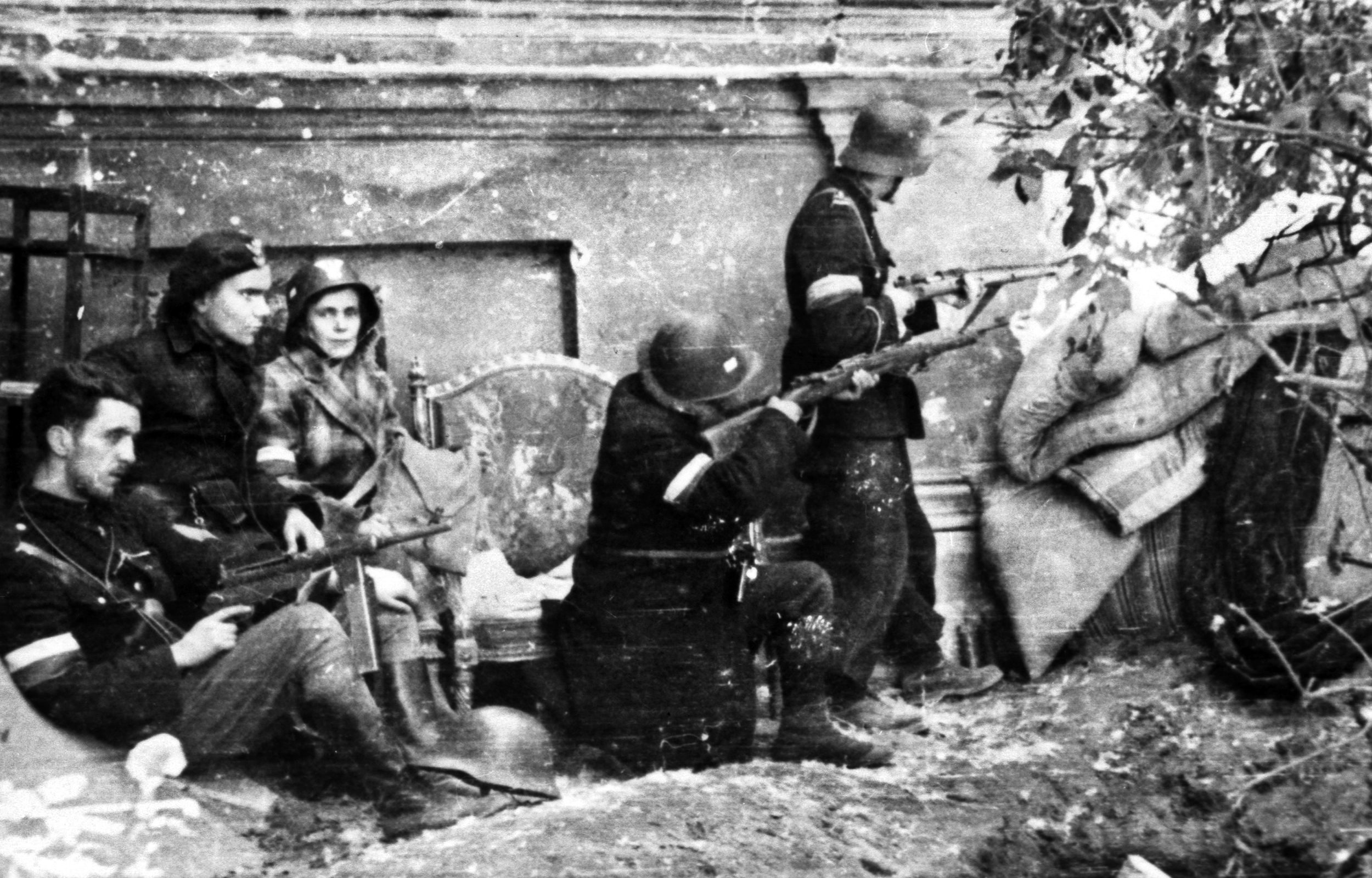
Within two years of re-emerging as a new Polish state in 1918, the Poles found themselves having to defend their nation and capital of Warsaw from an invasion by the Soviet Union. The Treaty of Versailles granted Poland eastern lands once partitioned to the Russian Empire, which Lenin wanted back. Known as the 1920 Battle for Warsaw, or “Miracle on the Vistula,” the Polish forces not only pushed the Red Army out of its capital but, through their later victories, reclaimed even more eastern lands. Thus, when the Second World War began on September 1, 1939, with the German attack on Poland from the West, many Poles were not surprised by the subsequent Soviet invasion from the east 17 days later.
Following the September invasions, the Polish government, under its new Prime Minister and Commander-in-chief, Wladyslaw Sikorski, relocated first to France and then to London, where it received the moniker of Britain’s “First Ally,” and operated as a government-in-exile.
Even though Poland fell to the Nazis and the Soviets within four weeks, the two nations failed to force a passive submission upon their new subjects. Many Polish soldiers escaped across the Romanian border to France and then to Britain, where they would eventually join Polish RAF units or, later, the newly created Polish II Corps under the command of a one-time Soviet prisoner Wladyslaw Anders.
To those left behind, it quickly became apparent that the German and Russian occupation would be brutal. Polish citizens experienced mass roundups, arrests, and murders. In Warsaw alone, the Germans killed over 40,000 civilians within the first year.
The Soviets deported 84,000 Poles to Siberian labor camps during the same period. Stalin and Hitler hoped that by exterminating the educated, influential, and ruling classes, they could subjugate the remaining peasant population through fear and intimidation. Instead, many Poles joined the underground armed resistance sanctioned by the Polish government-in-exile to avoid a fate similar to that of their countrymen.
The AK was not a ragtag group of peasants carrying out small sabotage missions. According to the historian Kenneth F. Koskodan, the resistance was a complete, autonomous, and fully functioning nation within Poland. Placed under the command of Gen. Komorowski, by the time of the 1944 Warsaw Uprising, the AK’s ranks would swell up to 380,000 troops organized into secret combat units.
The occupied nation’s complex, hidden state answered only to the London-based Polish government. It divided its power amongst multiple political parties, passed laws and statutes, and even established an underground judiciary system. Because both the Soviets and the Nazis closed down all Polish schools, the AK also operated a secret education system designed to help its youth maintain a sense of identity and defiance.
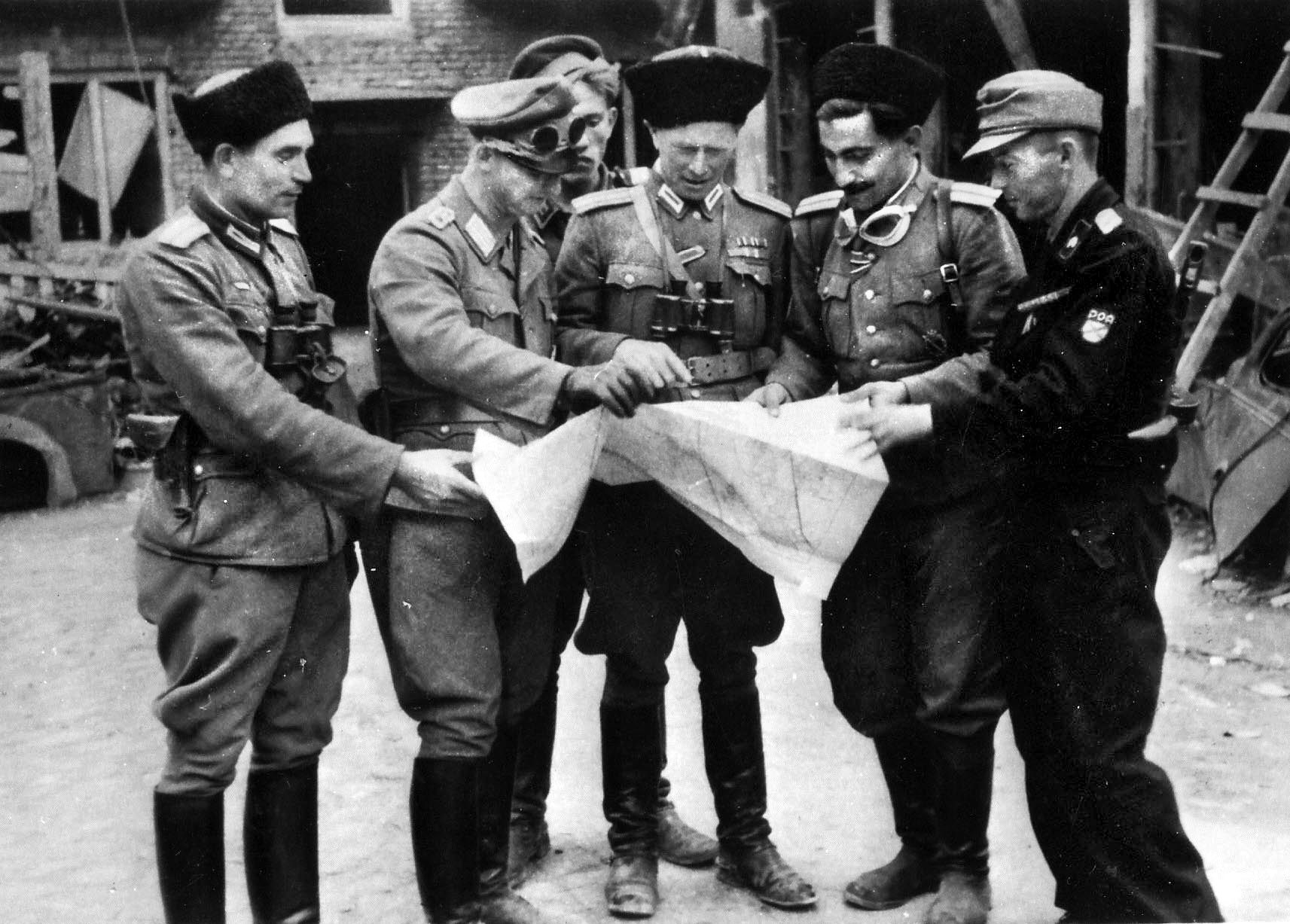
Still, the principal aims of the AK were, first, to support the Allies by transmitting intelligence and creating diversions, and second, to prepare for a national uprising as the hour of German collapse became inevitable. The latter centered around liberating the national capital of Warsaw. To Wladyslaw Sikorski in London, and Komorowski in Poland, there could be no more critical signal to the world that Poland had not surrendered than to free its capital city when the time seemed right to do so.
While Poland’s approach towards fighting Hitler’s Germany never wavered, the situation between its eastern neighbor, the Soviet Union, became that much more complicated after Germany invaded Russia in June 1941. Pressured towards a more pragmatic relationship with their long-time adversary, Sikorski’s government signed an uneasy peace treaty with the Russian leader, Josef Stalin. This new agreement brought back the 84,000 Poles imprisoned in Russian Gulags.
Still, the distrust between the two nations continued and grew to a boiling point when, in April 1942, the German army found the mass graves of 22,000 Polish officers murdered by the Soviet secret police in May 1940 in the Katyn forest of the Russian Smolensk region. The Poles asked the International Red Cross to investigate what the world was already referring to as the “Katyn Massacre,” resulting in Stalin severing all relations with the Polish government-in-exile and blaming the Poles for unfairly trying to turn the West against him.
The Allies, namely Britain and the United States, watched in apprehension as the Soviet Red Army turned the tide on the Eastern Front after the February 1943 Battle of Stalingrad and made their way towards Poland—this time as liberators.
Hoping to gain recognition from the Allies as a legitimate national military branch involved in the liberation of their nation, the AK took the 1944 Soviet push westward as a sign to launch their own Operation Tempest (Burza). Regardless of the recently severed diplomatic relations with the Soviet Union, the AK saw the Red Army’s advance as a means to overthrow their long-time German oppressors.
Tempest called for an armed uprising of all units along the eastern border, direct large-scale combat against the retreating German forces, and most importantly, the control of the nation’s capital before the inevitable Soviet entrance. The prospect of being liberated by a power that did not recognize Poland as an ally had quickly become a reality. And if the Red Army’s treatment of the AK between January 2—when the Soviet tanks crossed the pre-war Polish border—and the end of July told the Poles anything, it was that their suspicions were far from misplaced.
Russia viewed the AK, composed of independent and patriotic troops, as a threat to its post-war plans for a fully compliant and Communist Poland. Following the Polish Katyn Massacre debacle, Stalin labeled the Polish government-in-exile and the AK as criminals. In their place, the Soviets announced the creation of a new, official, pro-Soviet Communist governing body of Poland, the so-called “Lublin Committee.”
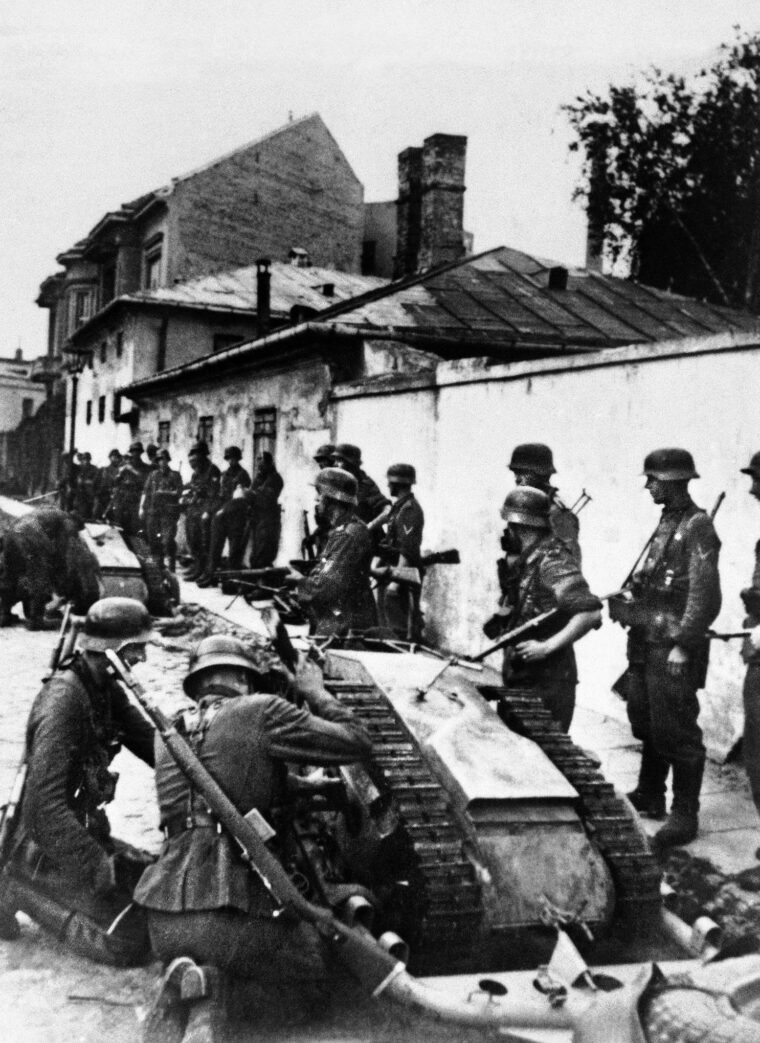
The Soviet intent became that much more pronounced in the city of Lwow. As part of Operation Tempest, the AK helped liberate the city in April 1944, only to have the newly arrived Soviet forces arrest and murder the AK officers that had just fought alongside them. The Red Army conscripted the remaining AK soldiers from Lwow into their hastily created pro-Communist Polish units.
The Poles could see that Stalin wouldn’t recognize any Polish organization that threatened his post-war plans. To Komorowski, it only meant that saving Warsaw was now even more of a priority. The Red Army must enter the Polish capital on equal terms as allies and not supposed liberators—or aggressors, as many in the AK suspected.
Preparations
Between 1939 and 1944, Warsaw vital for German control of the Eastern Front. The AK’s leadership knew that taking the city from the Nazis would not be easy, and they also knew that their success in doing so would rely on the Red Army’s support.
The goal was to seize control of Warsaw right before the Soviets entered the city, thus having to only hold on to their positions for a few days. As the Soviet advance continued toward Warsaw, the years of secret preparations turned towards active planning for retaking the capital.
By July 25, 1944, the people of Warsaw could hear the Red Army’s artillery firing at the retreating German Wehrmacht. Yet, even when Soviet bombers appeared above their city, and Russian radio broadcasts into Warsaw urged the population to rise against the Germans, the 40,000-strong AK did not take the bait and stuck to their pre-planned start time of August 1.
As far as Stalin was concerned, an uprising, especially an under organized one that he hoped for, would be a blessing. As prominent Polish historian Adam Zamoyski would later say, “It would have been madness for him to interfere while the Germans were liquidating the very elements that would be hostile to his purpose of turning Poland into a Soviet satellite.”
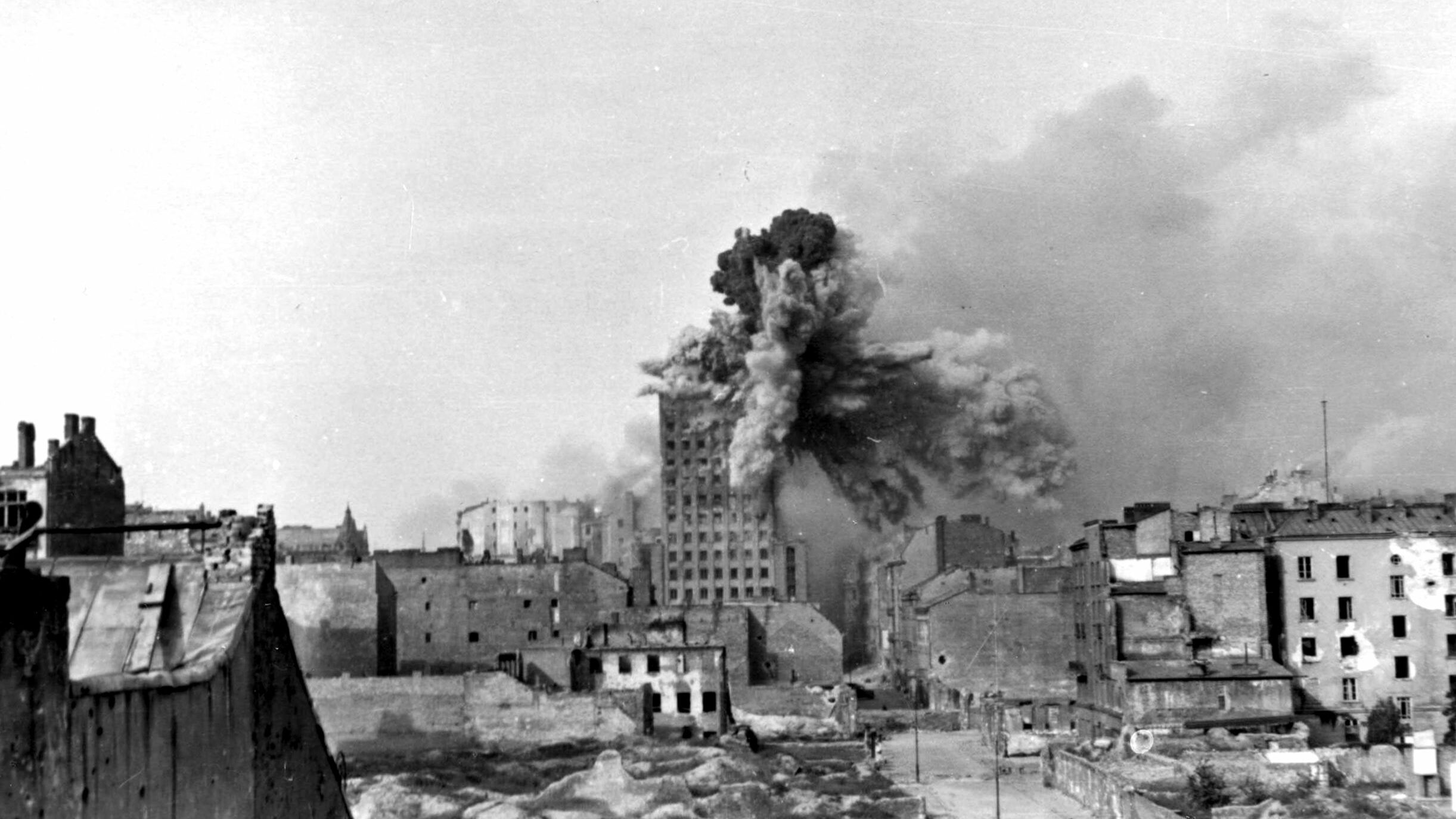
Various districts made up the geography of 1944 Warsaw, the fulcrum of which was the City Center which encompassed the Jewish Ghetto, which had its own failed uprising the previous year. To the west lay the Wola district, and to the east, the Old Town and Praga—the latter separated from the former by the Vistula River. The residential area of Mokotow completed the topography from the south and Zoliborz from the north.
A total of 40,000 AK soldiers within the city limits that housed one-and-a-half million citizens spent the final days of July amassing weapons near their selected objective points, ready for the planned 5 p.m. start time on August 1. Ironically, the Germans, themselves preoccupied with the Red Army now within one mile of Warsaw, did not notice the extra activity around them.
On August 1, the AK troops hurried to their preselected buildings, crossroads, and bridgeheads—the latter to establish safe crossings for the Red Army expected to arrive within days.
Although only one in 10 members of each unit possessed a firearm, and the entire army had no heavy weapons, the AK did not go into battle empty-handed. At zero hour, the Home Army had 1,000 basic carbines, 300 submachine guns, 60 light machine guns, seven heavy machine guns, 3,500 special carbines and bazookas, 1,700 revolvers, and 25,000 hand grenades.
Most of the weapons available to the soldiers came from caches buried by the Polish Army in 1939, supplemented by supplies left over from the Soviet retreat across the country during Operation Barbarossa. All of this was bolstered by the secret manufacturing of grenades and Molotov cocktails and eventually complemented with minimal airdrops from the Polish section of the British Special Operative Executive (SOE).
Due to the peculiar armament situation, the AK command designated German barracks and weapons supply locations as their army’s first objectives.
The entirety of the force was divided into companies that ranged from 50 to 100 soldiers, which included women and girls. On the eve of the fighting, 8,000 Warsaw women had taken the AK oath, with some becoming combatants while others nursed the wounded, prepared meals, and carried ammunition, mail, and dispatches.
The Polish Scouts, the Szare Szeregi (Gray Ranks), composed of boys between the ages of 12 and 17, made up one of the fiercest assault groups of the entire Uprising. The remainder of the troops came from all walks of life and social classes, including skilled and unskilled workers and former soldiers who went into hiding following the failed 1939 campaign. On August 1, 1944, they faced 13,000 Germans—a force that would swell up to 50,000 throughout the insurrection.
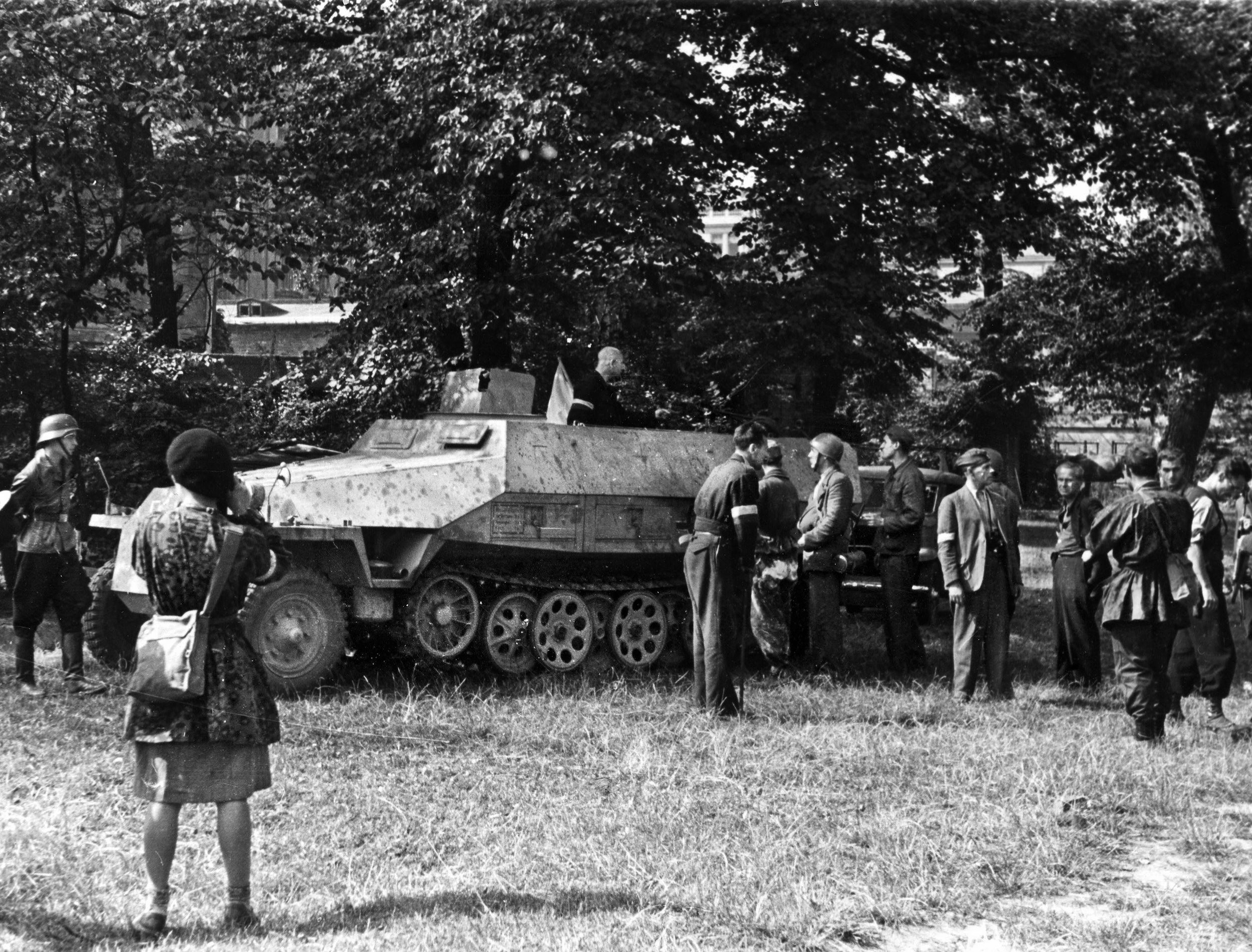
The Battle Begins
The Warsaw Uprising began at 5 p.m., but because of the tremendous secrecy of not letting everyone know the start time until a few hours before, many AK members had not yet made it to their destinations when the shooting started.
The first objective was weapons, whether from dead enemy soldiers or their fellow fallen brothers-in-arms. To that end, the Mokotow section and its Woronicz School, a known German stockpile of weapons, became one of the primary targets, as did the Wola district’s two large cemeteries, with the anticipation that they would become drop sites for Allied-delivered supplies and weapons. The other major objectives were the Praga district, which the AK hoped would become the bridgehead for the Red Army’s crossing into Warsaw, and the Municipal Building in the city center, which housed the main German garrison.
Although red-and-white Polish flags flew once more in some places, and Komorowski’s assessment had the AK in control of two-thirds of the city by the morning of August 2, the Warsaw Uprising’s beginning was rocky. By the end of the first day, the AK had lost 2,000 soldiers, four times the German losses.
Though the AK held large portions of Warsaw, the Germans held firm in the town center and controlled the train stations, bridges, and both Warsaw airports.
In the Mokotow section, the Germans beat back all AK advances on their weapon stockpiles, severely limiting their desired objective of quickly arming the insurgents. In Praga, instead of securing the bridges into the city, the Home Army was beaten back by the German counterattack of panzers and heavy infantry.
Meanwhile, in the Wola district, the inability of Komorowski’s men to secure a former prison building near the cemetery drop zones gave the Germans a fortress within the Polish lines and the control of the city center.
When the people of Warsaw woke up on August 2, their city was split into pockets of AK-occupied zones surrounded by various German strongholds. Polish attacks continued from the previous day, followed closely by German counterattacks. Komorowski’s potential mistake of splitting his forces to take vital positions instead of a concentrated assault on the center of town left the Poles with little to show on the second day of the Uprising.
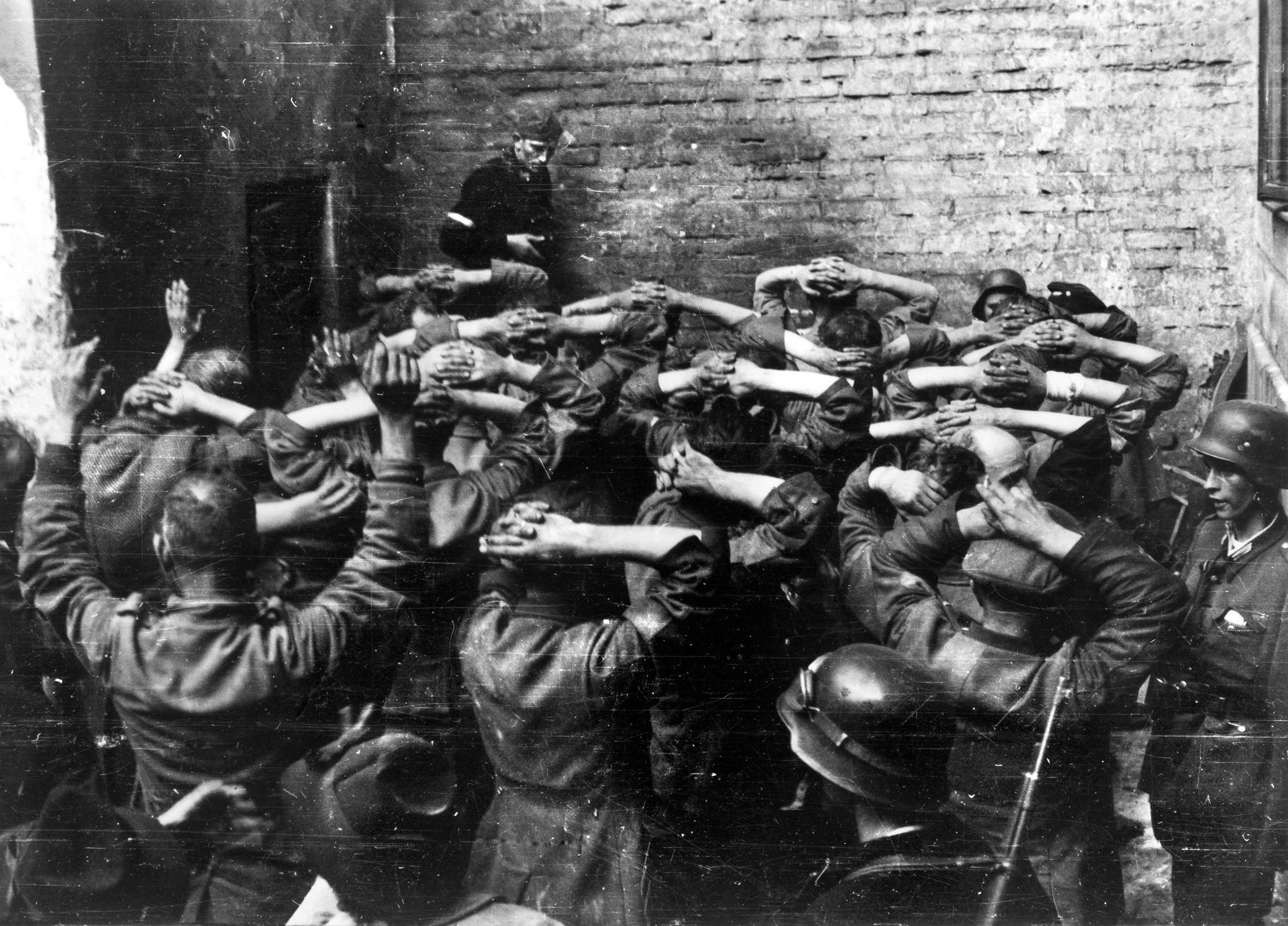
Also, due to the disjoined command and lack of radio and telephone usage, closely monitored by the Germans, there was inadequate communication between the Home Army units. The two staff radio transceivers, explicitly intended for communicating with London, had also been made inoperative due to damages sustained on the first day of fighting and the missing vital parts needed to repair them. On August 2, Komorowski had to climb up on a roof to survey his troops, as below him, women and girls as young as eight years old delivered vital messages between the various AK positions.
As the AK command spent most of the second day attempting to establish communication with the Polish government-in-exile, the Home Army fought on in the streets with much more success than the previous day. Komorowski’s radio controllers finally got a link-up with London. The general asked for the much-needed supplies and weapons and the support of the Polish 1st Parachute Brigade now training in England.
His message ended with, “In view of the fact that the fight to capture Warsaw has begun, we ask for Soviet help to be supplied in the shape of an immediate attack from outside.” The reports from the Praga district remained unchanged; the Soviet advance into Warsaw had imprudently stopped.
Even as the AK’s transmission was still going through, the Polish Home Army was capturing vital objectives and setting up defensive fronts that would allow them to hold out a few more days until Allied help arrived. At the Woronicz School building in the Mokotow section, a German garrison made over-confident by their previous day’s victory left the confines of the building and launched their counterassault.
The Poles, reinforced by new units during the night, quickly surrounded the Wehrmacht troops by sneaking into the school building and cutting the enemy garrison in half.
The school’s overwhelming cache of German weapons and supplies became vital for maintaining the AKs initiative throughout the remainder of the day.
After ferocious fighting that began the previous evening, the Poles were finally able to take back the power plant from the Germans. That same day, Komorowski’s men also secured the post office and the Prudential Building, which became the AK’s main stronghold.
In the Polish-held sections of the town, the civilian population came out to help the soldiers build fortifications and barricades. The anti-tank obstacles consisted of overturned vehicles, piles of furniture, and stacked paving stones.
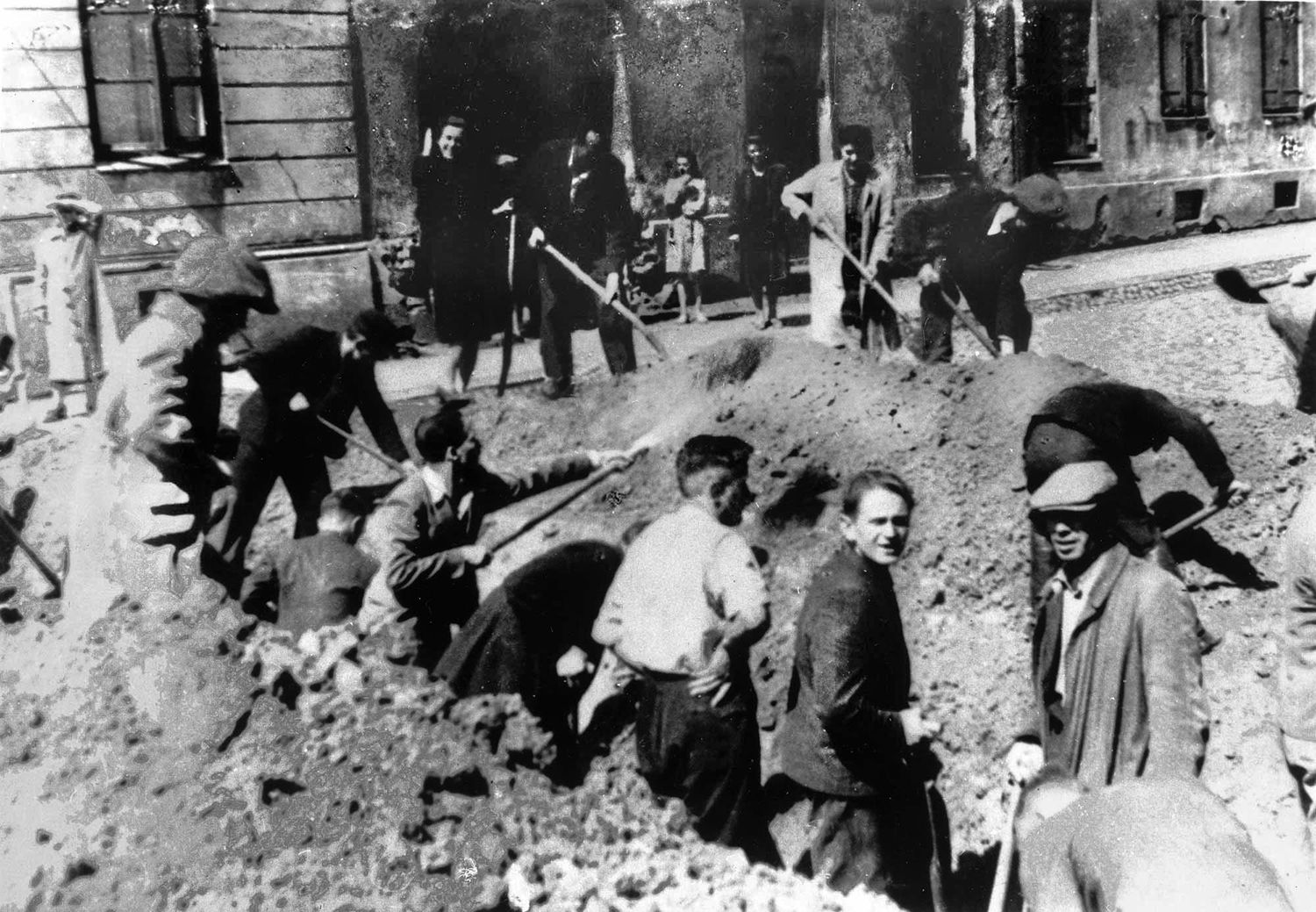
Behind the fronts, the AK set up aid stations, hospitals, soup kitchens, and even printing presses. The city seemed to come alive with Polish newspapers, posters, and announcements appearing for the first time since 1939. Men and women wearing the red-and-white cloth armbands about five inches wide—an official uniform of the AK as there was no real army garb but leftover German uniforms and civilian clothes—moved freely in Home Army-held areas. Help, they thought, was around the corner.
In reality, Komorowski was having a hard time convincing the Allies to join the fight. The requests for aid and men remained unanswered. Unbeknownst to the Polish general, the Allies had no intention of sending the London-based Polish Paratroop Brigade set up for the push forward in France and Italy, nor would Stalin help if such a plan was in place.
As the battle to help Warsaw raged on between London and Moscow, the Soviets refused to acknowledge the Uprising, initially reporting it as a rumor. Once the battle was in the Western press, the Soviets couldn’t deny its existence.
Still, Stalin refused Prime Minister Winston Churchill’s request to allow British planes to use Soviet-controlled airspace and airfields. Long-range supply planes would need to land and refuel at Soviet bases in eastern Poland. Stalin complicated matters for the AK in Warsaw by ignoring all requests for Soviet supply drops and artillery support.
By the third day, a few Allied airplanes made it to the Polish capital and dropped some supplies, including machine guns, ammunition, grenades, and food.
The sporadic and un-coordinated air drops were not enough to help the Poles in the onslaught they were about to face at the hands of the Germans. Cut off from the West, and with the Red Army stalling their advance before entering the city and giving full air autonomy to the German Luftwaffe by withdrawing all their aircraft from Warsaw’s airspace, the AK was on its own. The real battle for Warsaw had just begun.
Bloody Retribution
The AK continued to gain ground through the remainder of the first week. With the German stockpiles mostly secured, the Poles held tight to most of the Old Town, the city center, Zoliborz, Mokotow, some of Wola, and select pockets of Praga.
The AK also broke into the Warsaw Ghetto to free the small number of Jews who remained after the purges and deportations that followed the 1943 Ghetto Uprising; many of those released volunteered to serve in the Home Army ranks. The infamous sign of Nazi oppression would never enslave another human being within its walls.
Reichsführer-SS Heinrich Himmler himself spearheaded the German counteroffensive by promptly ordering SS-Obergruppenführer Erich von dem Bach-Zalewski’s units that specialized in battling guerilla groups, to crush the Warsaw Uprising.
Himmler’s personal orders called for the annihilation of the city of Warsaw, stating, “Each block of houses is to be burned down and blown up so that none of their units can dig themselves in.” Adolf Hitler gave the Reichsführer -SS his blessing with a simple comment, “Wipe them out!”
Himmler and Zalewski brought all available troops to Warsaw, including police regiments from nearby occupied Polish cities, and the infamous SS Brigade Dirlewanger and Russian SS Assault Brigade RONA, led by Brigadier Mieceslav Kaminski. Out of the 21,000 reinforcements that occupied Warsaw by the third week of the Uprising, the two groups numbered close to 5,000 men.
The German military sanctioned the Russkaya Oswoboditeljnaja Narodnaja Armya—the Russian National Liberation Army (RONA)—in 1941 to self-govern a remote region of the Eastern Front. Made up of anti-communist Russians who chose to betray their own in return for German clemency and their own survival, the unit consisted of unruly, single young men without much military training.
Zalewski gave this uncivilized and wild group, distinguished from the other German units by their Soviet uniforms with a yellow armband, the right to pillage and do as they please in their fight against the Poles. The results were barbaric and inhumane.
To make matters worse for the Poles, the already violent RONA unit was reinforced by one of the most infamous German formations of the entire conflict: SS Brigade Dirlewanger—the so-called “poachers” regiment under the command of SS-Oberführer-SS Oskar Dirlewanger.
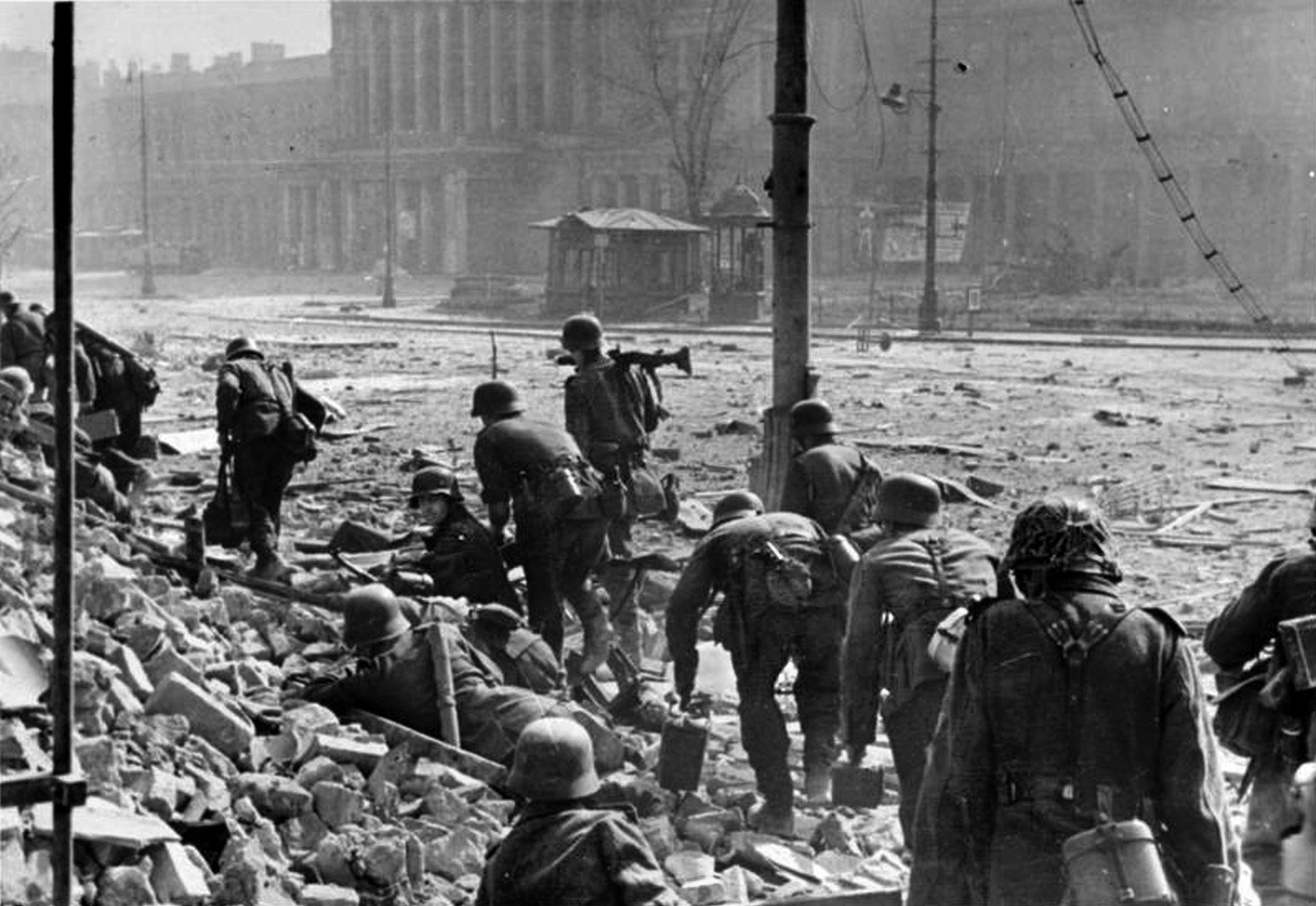
The Führer permitted its commanding officer to collect criminals from German prisons to fill the regiment’s ranks. Their methods became so infamous that the SS Supreme Command suspended Dirlewanger’s 2,500-strong brigade for their wholesale looting, rape, and barbarity toward fighting partisan groups on the Eastern Front.
Even Dirlewanger, a convicted rapist, was arrested by a superior SS officer, albeit only briefly. The “murderous crew,” as one enraged army general called them, were now needed in Poland.
The two infamous formations took the initiative in leading the German-reinforced counterattack, which now saw the Polish AK outnumbered three to one. On August 5, 1944, RONA and the Dirlewanger units entered the Wola district in hopes of setting an example, raping and killing with complete disregard for age or gender.
By the next day, when they moved on to other parts of the town, Zalewski and Dirlewanger’s men managed to kill 40,000 civilians, including women, children, hospital staff, and priests. In every recaptured street in Wola, the Germans ordered all inhabitants to leave their homes and herded them together before firing squads cut them down.
Witnesses later recalled the skies over Wola illuminated by burning ruins of all buildings and large heaps of dead bodies soaked in gasoline and set ablaze. Earlier in the day, the “poachers” regiment stormed the Wola hospital and shot all the sick and wounded, setting the building on fire with the doctors and nurses still inside. At the Curie-Sklodowska institute hospital, containing only women suffering from cancer, Dirlewanger’s men raped the patients and nurses alike before finally killing them.
It now became obvious to the German generals that air support would be necessary, as their units were not advancing as much as they were plundering and committing mass murder. Within days, as the criminal units moved on to other sections of the city, the people of Warsaw could add around-the-clock bombings to their already perilous situation.
With the enemy back in the open, the AK’s lines and strongholds became much more isolated, hindering the army’s communications and ability to move around within and to and from their positions. Initially, the Poles blew holes between the hidden outside walls of the city’s connected buildings, just small enough for men and women to squeeze through. This was not an easy task as the concrete walls were almost two feet thick.
“I remember my hands were so bloody from going through those holes,” recalled Halina Knowiak, an AK courier. “On the street, the Germans were very close, they had tanks and snipers shooting at us all the time, so we had to use the holes.”
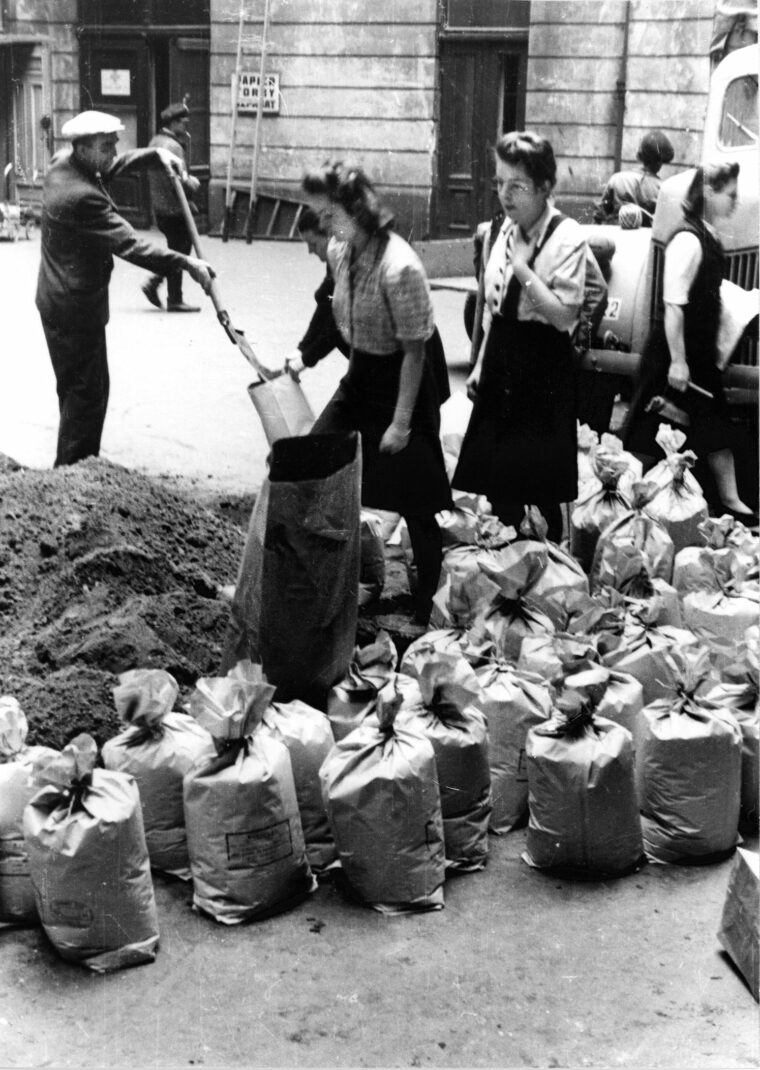
As moving freely proved too slow and nearly impossible, Komorowski soon adopted a new means of travel that would come to symbolize the Polish struggle in Warsaw—the city sewer system. After the Wehrmacht split the Polish strongholds in half on August 9, the AK headquarters found itself cut off within the confines of the Old Town and separated from its main force in the city center.
A former municipal worker suggested to Komorowski that the underground tunnels and passages would allow the AK to move undetected below the Germans.
The city tunnels became a major lifeline for the flow of materials, reports, and troops. Some of the tunnels were tall enough to allow standing, but most were only two feet wide and three feet high.
As traveling in the dark was mandatory, Komorowski created a staff of traffic managers whose role in the sewers superseded even his rank. Those in charge assigned the traffic flow directions to specific times of the day, and nobody could enter the sewers without written permission.
The guides, who would sporadically use torches in an otherwise pitch-black environment, assisted with moving from one destination to another. And because the tunnels passed directly below the Germans, any noise or light infraction was severely scolded.
A Shift to the Old Town
In the third week, the brunt of the German onslaught shifted towards the Old Town district. The hopes of the young men and women cut off from the remainder of the Polish positions got a brief respite in the form of a three-day run of British RAF bombers finally dropping the much-needed supplies. Quickly brought to a halt by the Soviet’s denial of using their refueling stations, the drops did little to sustain any real excitement among the AK, as most of the packages landed in German-occupied streets.
The situation worsened as the Germans moved additional units into Old Town, including the Dirlewanger Brigade.
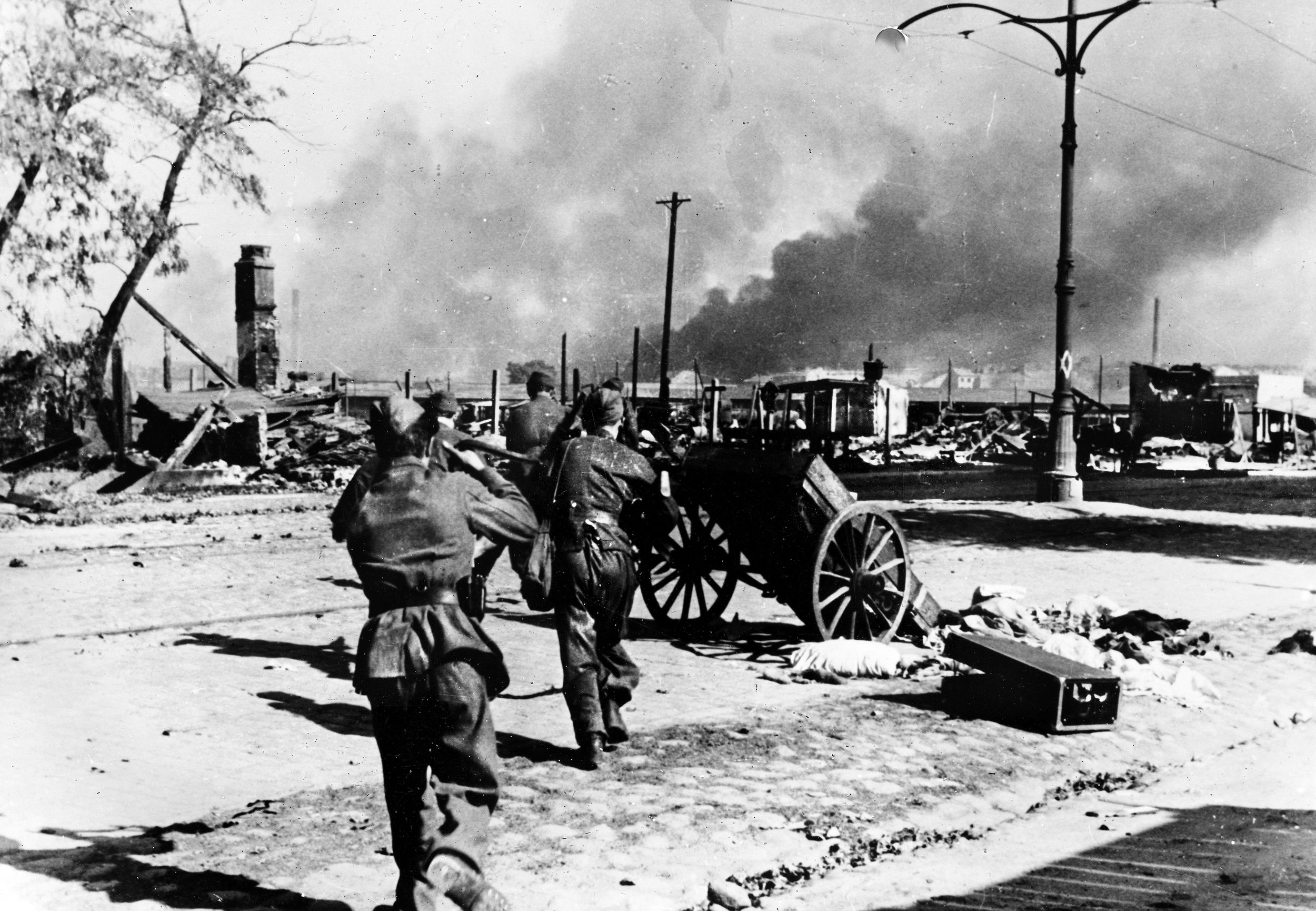
And while the district had already withstood around-the-clock artillery barrages and Luftwaffe bombings two to three times a day, the Germans added experimental, small, unmanned remote-controlled tanks, named Goliaths, to bring explosives closer to the AK lines. When the experiment failed—the Poles simply cut the control lines—the Wehrmacht brought in a 600mm mortar to level the Old Town completely.
The AK and thousands of the district’s civilians were at the mercy of the SS, who now began rounding up Poles as human shields in front of their panzer and infantry units.
By August 27, the situation in the Old Town was critical enough for Komorowski to make the nearly unbearable five-hour trek through the sewers to establish a new headquarters in the city center, which itself was barely hanging on from the German onslaught.
By August 30, the Germans had lost 91 officers and 3,770 NCOs, with losses at Old Town reaching 50 percent of the total German strength sent to take it. The Supreme Commander of the Ninth Army brought into Warsaw weeks prior would inform his superiors, “I see no prospect of holding Warsaw with my present forces.”
Even the Dirlewanger unit was badly depleted, prompting the SS to reinforce it with 1,500 fresh concentration-camp convicts. The daily shelling and dive-bombings took their toll on the Poles holding Old Town and when Komorowski’s forces failed to break through from the city center on August 30, the remaining AK soldiers held out for a couple more days to cover their escape through the sewers. Men continued to attack the enemy from their posts, running from one position to another and firing a few bursts to give the impression there was still a sizable force hidden in the rubble.
Because the casualty numbers were so high, the Germans requested a temporary ceasefire on September 1 for both sides to retrieve the dead and wounded from the remnants of the Old Town. By the time the last 20 AK soldiers under the young officer Czeslaw Korzycki made the final departure the following night, no building was left undamaged.
Gunboats on the Vistula River, railroad guns, artillery, tanks, and Luftwaffe bombers pounded the three-quarter square mile area with 1,500 tons of ordnance for 11 days. Germany brought in 13,000 infantry troops against the 5,000 entrenched AK fighters and thousands of civilians. “This was hell, I mean hell,” was all Korzycki could say about his time in defense of the Old Town.
With the fall of Old Town, and the Mokotow and Powisle districts all but in the German grasp, the city center became the enemy’s number one target. The war of attrition worsened after the Germans cut off the city’s water supply and then repossessed the electrical plant in Powisle, which supplied power to the Polish-controlled regions under the AK control.
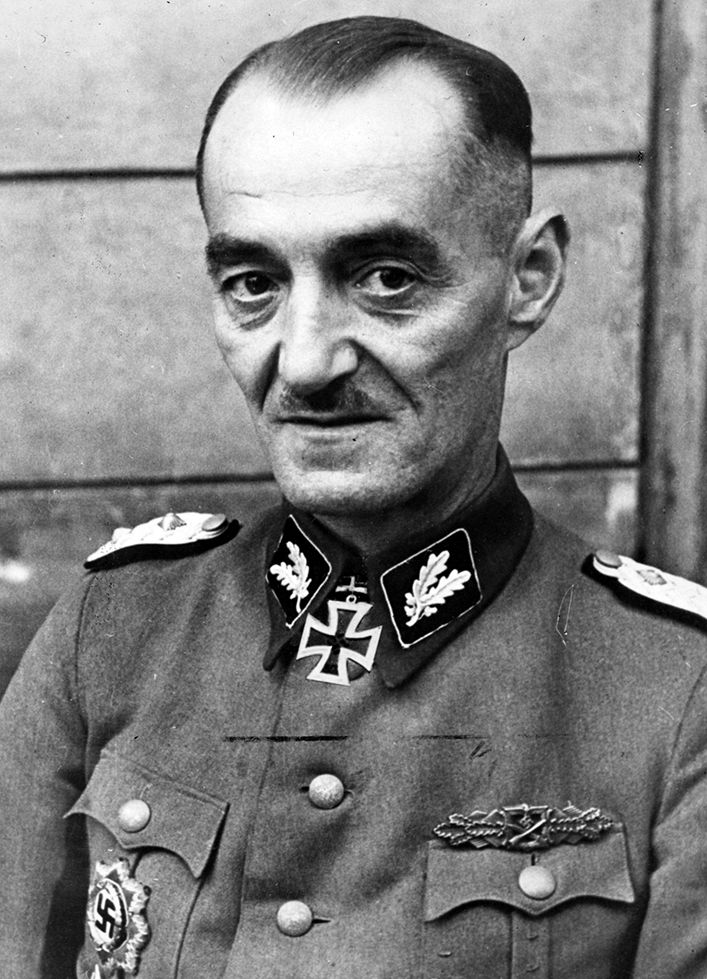
The lack of light and electricity hampered explosives and food production and limited medical care often administered in the cellars of destroyed buildings. By the second week of September, the people of Warsaw and its defenders sustained themselves on bread made from sawdust and watered-down barley soup—with even those quickly running out. Within days they would resort to eating horses and rats as dysentery and disease took the lives of those spared by the German bullets.
At one point, the Poles set up a dog-eating system to ensure that people did not eat their own pets, which relied on families exchanging their animals.
Komorowski’s unanswered messages to London painted a grim picture for his Home Army. Help was not coming, and the Polish general seemed to have only two options left: continue a fight they could not win, or surrender. “Warsaw is not waiting for empty words of praise, for expressions of recognition, not for assurances of sympathy,” stated the London-published Polish newspaper Dziennik Polski. “Warsaw is waiting … Warsaw is waiting … for weapons, food, and ammunition.”
The last remnants of any hope for survival ended with the German discovery of the AK’s sewer system. By September, German soldiers were ordered to throw grenades down manholes, while actions were taken to pour concrete and debris down into the tunnels. In some instances, the Germans poured flammable liquids down through the above-ground openings, followed by tossing down lit matches upon hearing any noises from below. The situation was growing more desperate by the hour.
With only two weeks left in the Uprising, Stalin, well aware of the AK’s situation, acquiesced to Western sentiments and air-dropped supplies. What the American and British press took as the Communist leader’s change of heart and goodwill amounted to a few small planes that flew at low altitude and whose crews threw out weapons wrapped in potato sacks without parachutes—rendering the cargo inoperable after it crashed to the ground.
As a further insult, some of the drops contained single cans of food, presumably meant to feed hundreds of thousands of people. And to make matters worse, when the Soviet artillery resumed firing on September 15 after weeks of silence, the barrages landed on Polish instead of German positions.
Seeing Stalin’s initiative, two days later Churchill ordered the RAF to supply Warsaw. While the 107 B-17 bombers were initially a welcomed sight, the event soon turned into further frustration. Only 21 containers out of 1,248 landed in AK-occupied territories, with the rest falling into enemy hands; had the drops come sooner, they could have landed in the majority-controlled Polish Home Army areas. None of that mattered now, especially as the Red Army’s artillery and airplanes once again went silent on September 18—Warsaw was once again alone.
By September 23, the Germans had squeezed the remainder of the AK units into the city center. While Komorowski’s men established a new stronghold, by then, all the supplies had been used up. The few remaining doctors and nurses could do nothing but offer words of comfort to the wounded and dying, as there simply were no medical supplies left to share.
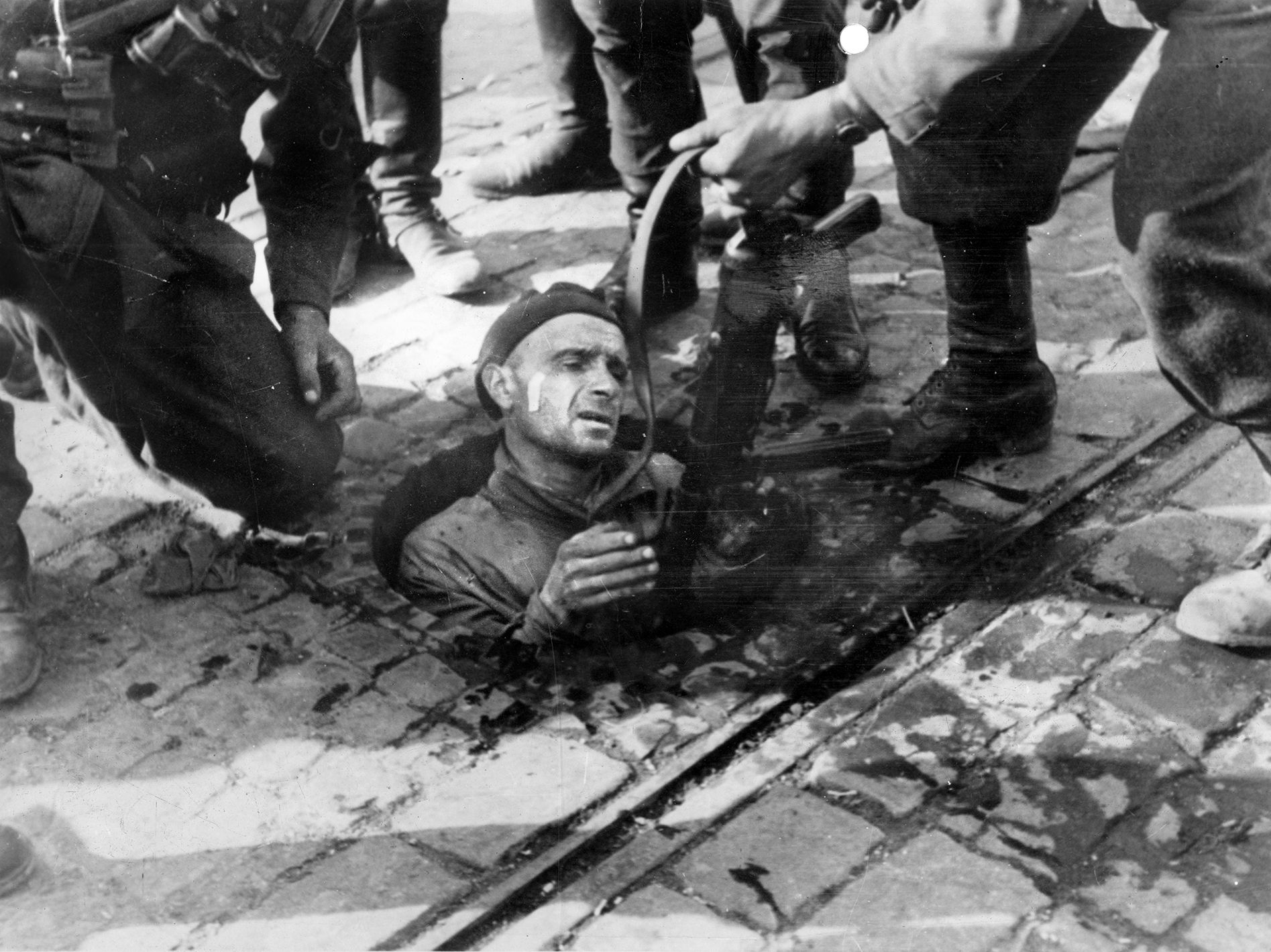
Meanwhile, the German artillery and bombing intensified. The main Wehrmacht units, the RONA, and the Dirlewanger Battalions were all held back to avoid risking casualties in the crossfire. Ironically, by those final days of fighting, the latter two units’ atrocities became public enough for the SS to pass an order to have RONA’s brigadier general shot—which they later blamed on Polish partisans.
Dirlewanger used his high-ranking connections to escape reprisals for his war crimes in Warsaw. He returned to Germany and received the Knight’s Order of the Iron Cross.
Inside the city center, people could not move without being covered by dust, glass, splinters, and debris. The attacks began each day at 8 a.m. and continued at hourly intervals. Four German Stuka dive bombers covered the entire area with high explosives each time. Major Wardejn-Zagorski, the press officer for the AK, recalled those final days in his diary: “On Miodowa Street, a hit buried about 200 people in the air-raid shelter, and on Jacka Street, 20 more suffered the same fate.”
General Komorowski sent a final message to the Russian lines on September 28, notifying them that unless help arrived within the next couple of days, the AK would be forced to surrender—no reply ever came.
The Polish leaders realized that any attempt to continue the fight would result in the senseless slaughter of the people of Warsaw. And unlike the Soviets, the Germans were quick to respond to Komorowski’s letter asking for the terms of surrender.
The End Comes
The AK’s guns ceased firing on October 2, 1944, as General Komorowski met with German General Erich von Dem Bach-Zalewski. By then, the most crucial point for the Polish general was the German recognition of his soldiers, men, and women, as an official branch of the Polish military, guaranteeing them humane treatment as proper prisoners of war, not criminals.
With the Soviet Army still waiting quietly on the city’s outskirts and with the German guarantee of POW status secured, the members of the Armia Krajowa assembled for surrender on October 5, 1944; they had fought for Warsaw for 63 days.
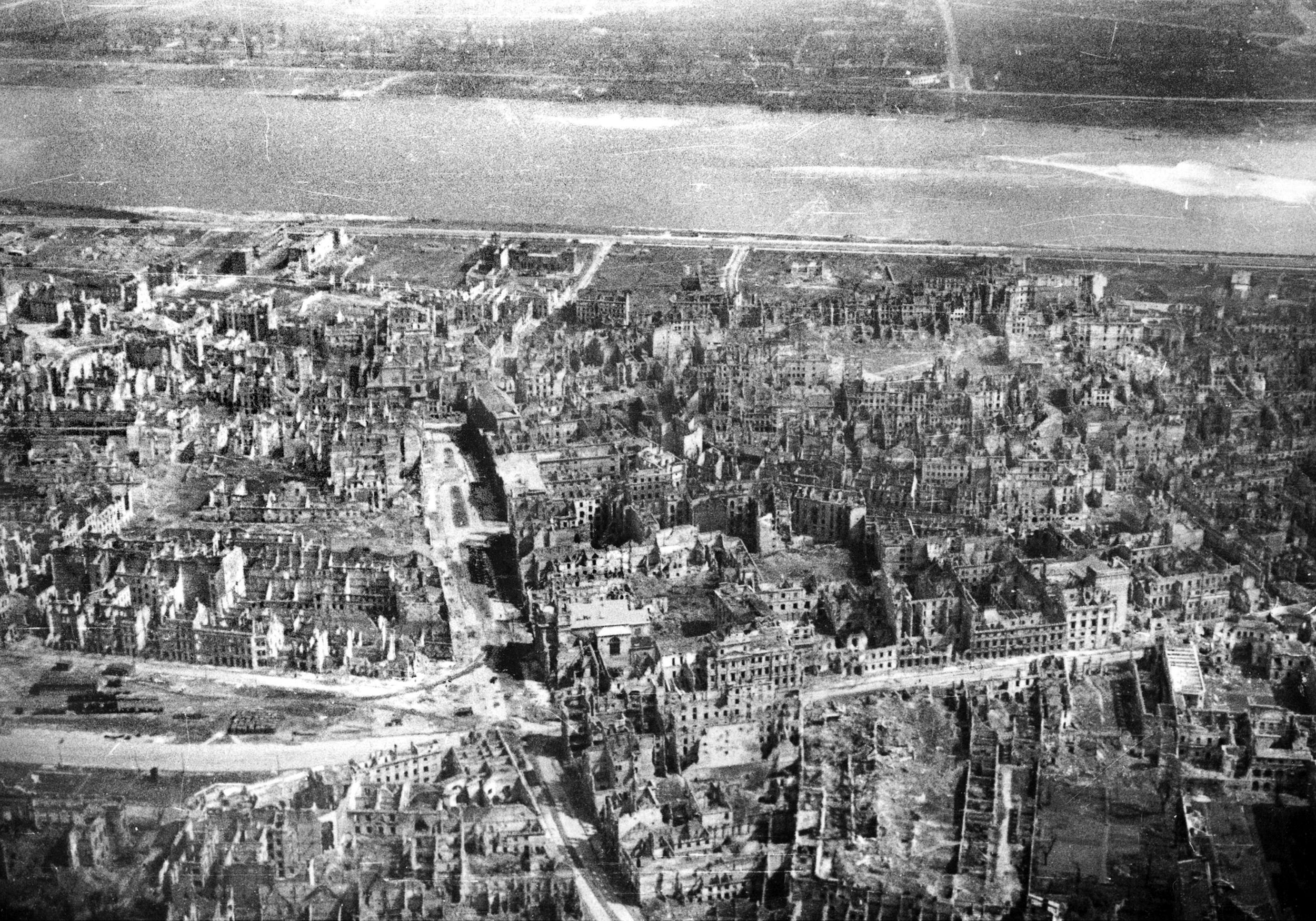
In the end, the Battle for Warsaw saw the Armia Krajowa fight off numerous German panzer divisions, Wehrmacht units, the Luftwaffe, heavy artillery, tank units, and uniformed criminals. Germany lost 20,000 men and had another 9,000 wounded, while the AK did not fare much better, losing 18,000 men and women. And as almost every Home Army soldier suffered some form of injury, the estimated number of casualties is unclear. The most sobering statistic from the battle was the deaths of more then 180,000 Polish civilians.
Surprisingly, the Germans kept their word and treated the surrendered AK members as prisoners of war, not bandits as their Soviet counterparts viewed them. Within days of the surrender, the Germans expelled all remaining in the city, with many sent to die in concentration and labor camps. Although more than two-thirds of the city lay in complete ruin, Hitler ordered Warsaw to be leveled to the ground.
While AK units outside Warsaw continued to operate and conduct sabotage raids for at least a few more months, most of its members dispersed back into the population following the fall of the Polish capital. When the AK surrendered, and Warsaw was completely leveled, the Soviet Red Army resumed its offensive and pushed toward Berlin.
As the Soviets liberated Poland in the winter of 1944-1945, their presence was as unwelcome as that of the Germans in 1939. News of the Warsaw Uprising spread like wildfire, and all knew of Stalin having left the Poles to fend for themselves in what became the largest partisan uprising of the entire Second World War.
Instead of giving the Polish government-in-exile a bargaining chip at the Allies’ table, the Uprising’s failure hindered any meaningful progress on guaranteeing post-war Polish sovereignty. Unwilling to offend Stalin, whose force continued to win victories against Hitler’s forces, Churchill and President Franklin D. Roosevelt—and his successor Harry S. Truman—pressured the Poles into agreeing to the Soviets’ land demands, the establishment of a Poland-based Communist government, and the complete dissolution of the Home Army.
By the time Stalin’s true intentions for a Polish satellite state and a Communist Eastern Europe became clear, it was already too late. Despite strong objections from Churchill and Roosevelt at the Yalta Conference in February 1945, and again at Potsdam in July, the Soviet leader officially appointed an interim Communist government in Poland, consisting of 21 ministers, of whom 16 were his men.
The Allies saw no choice but to recognize this new government as legitimate, withdrawing recognition from the democratically elected, London-based Polish leadership. Poland would remain under Soviet control until the fall of the Soviet Union and the end of the Cold War in 1990.
Peter Zablocki is the author of numerous books and articles pertaining to history. For more information, visit www.peterzablocki.com. The author recommends Norman Davies’ Rising 44: The Battle for Warsaw (Viking) and Kenneth K. Koskodan’s No Greater Ally: The Untold Story of Poland’s Forces in World War II (Osprey).
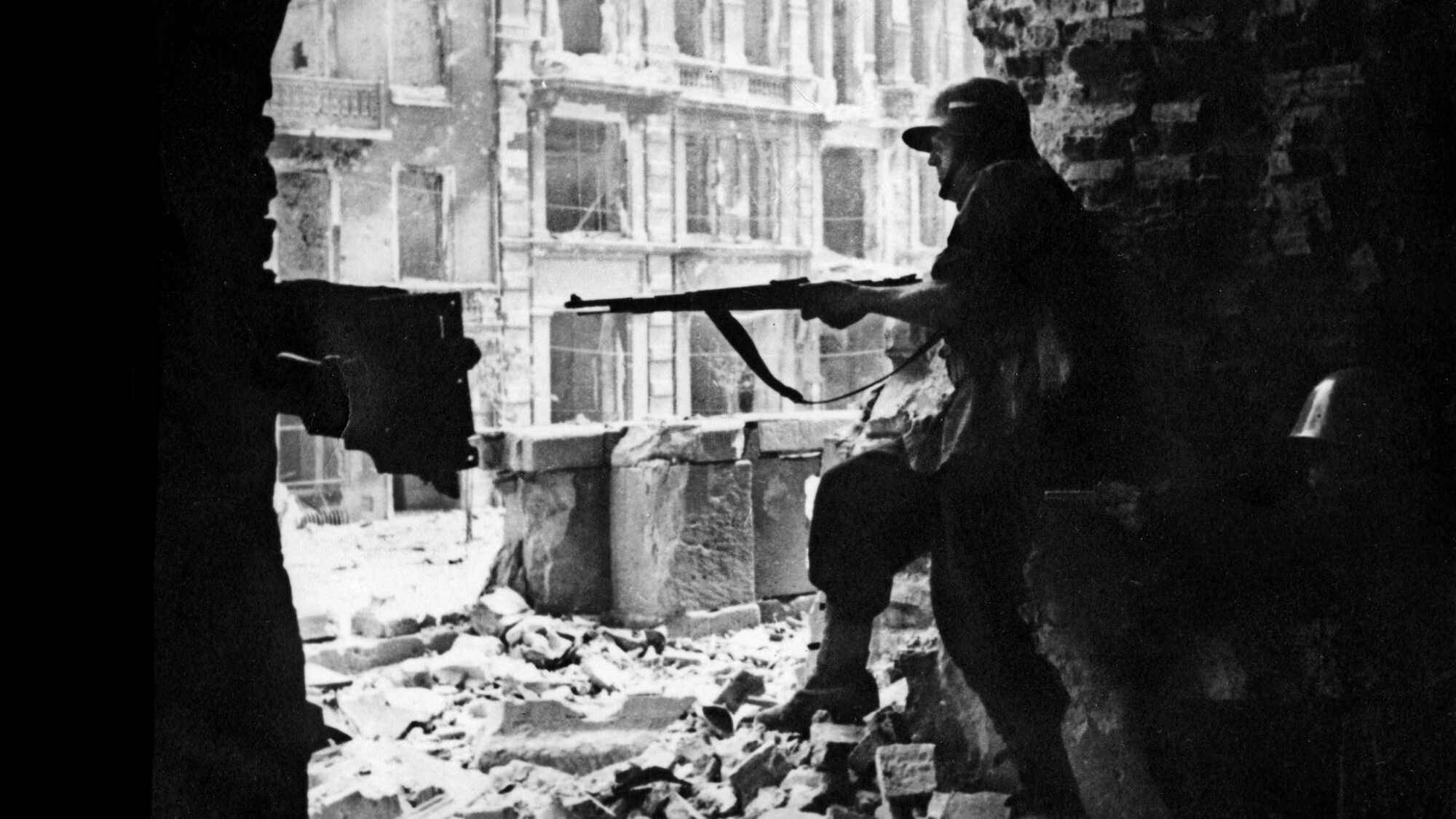
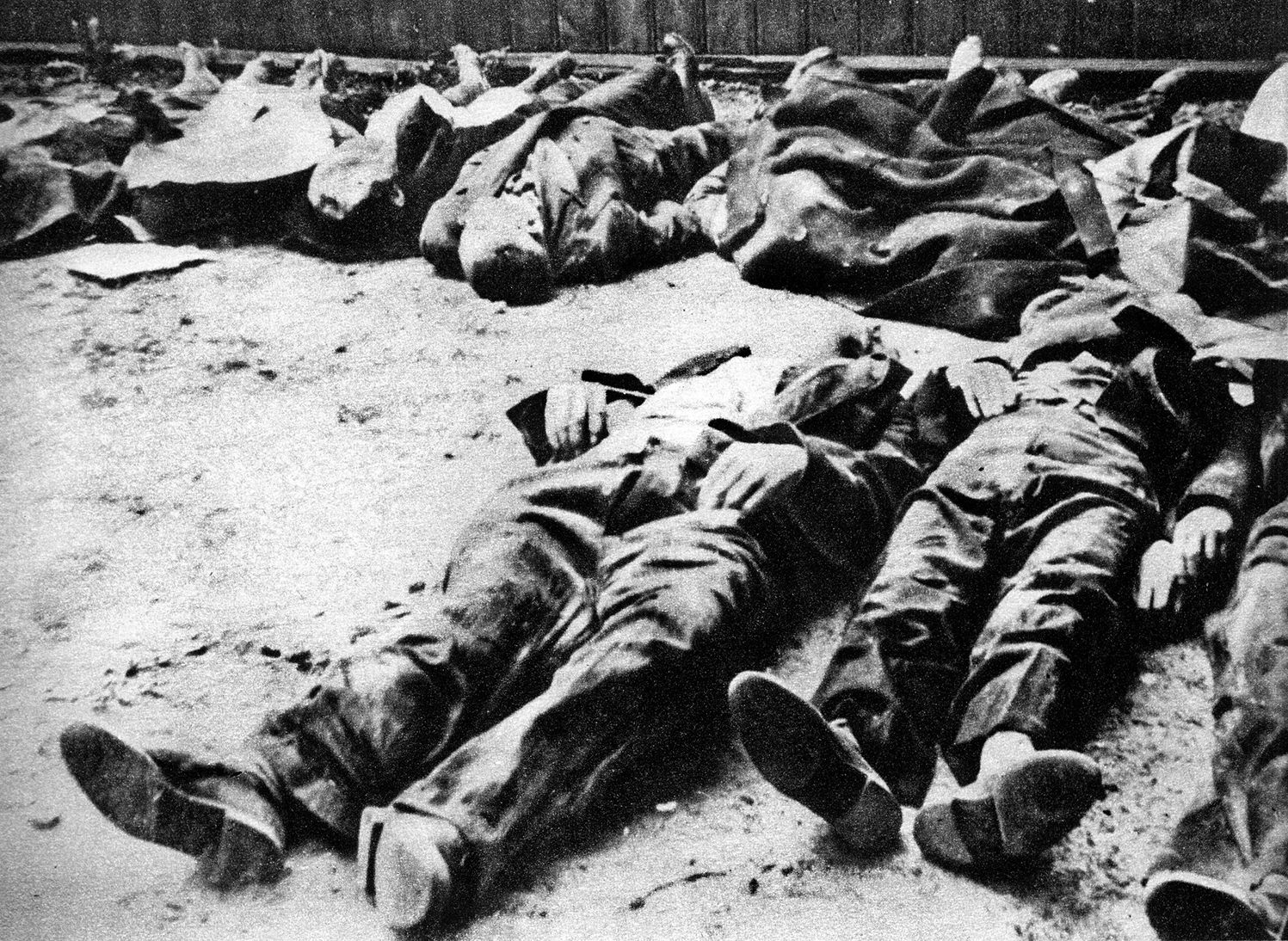
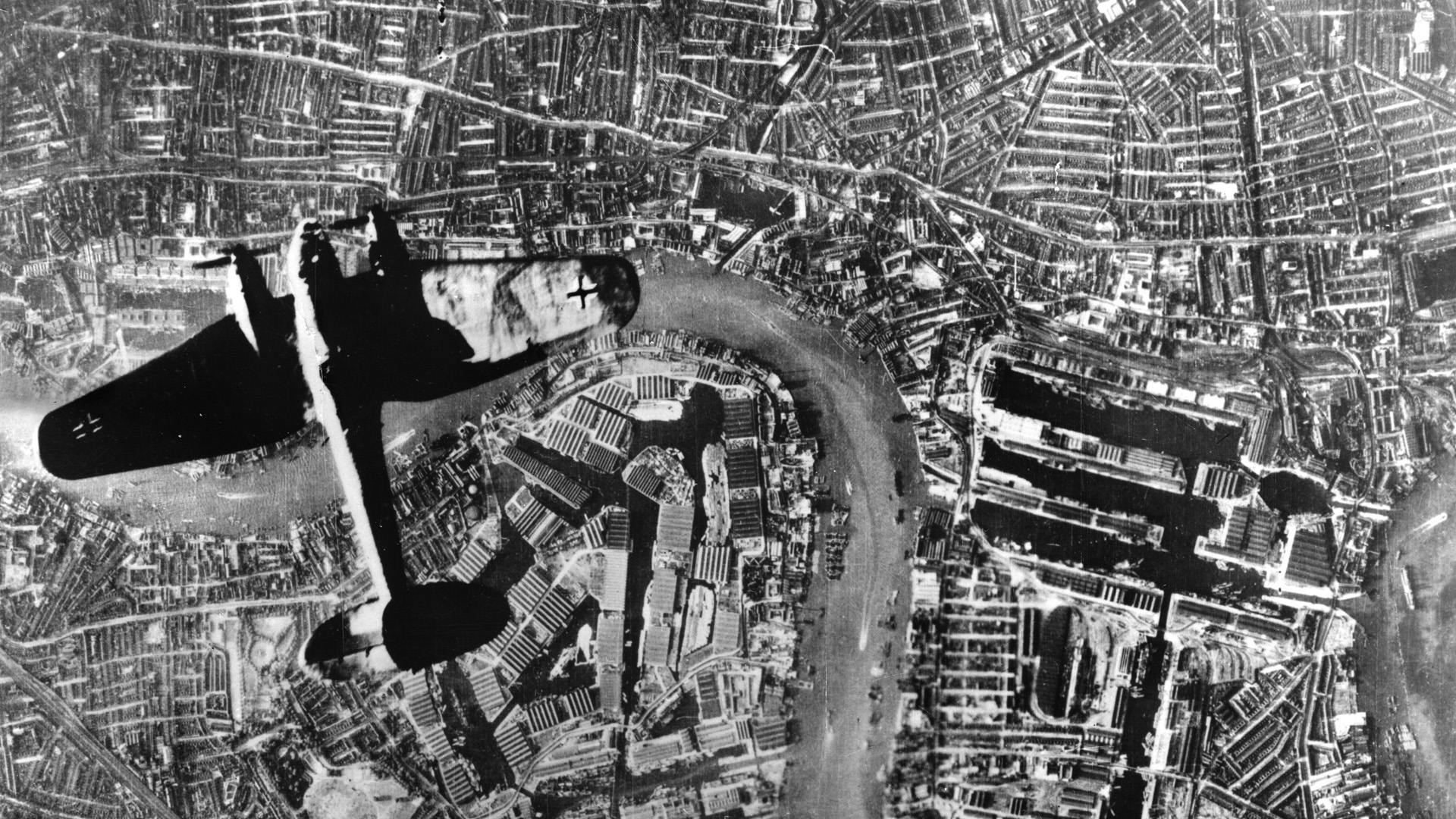
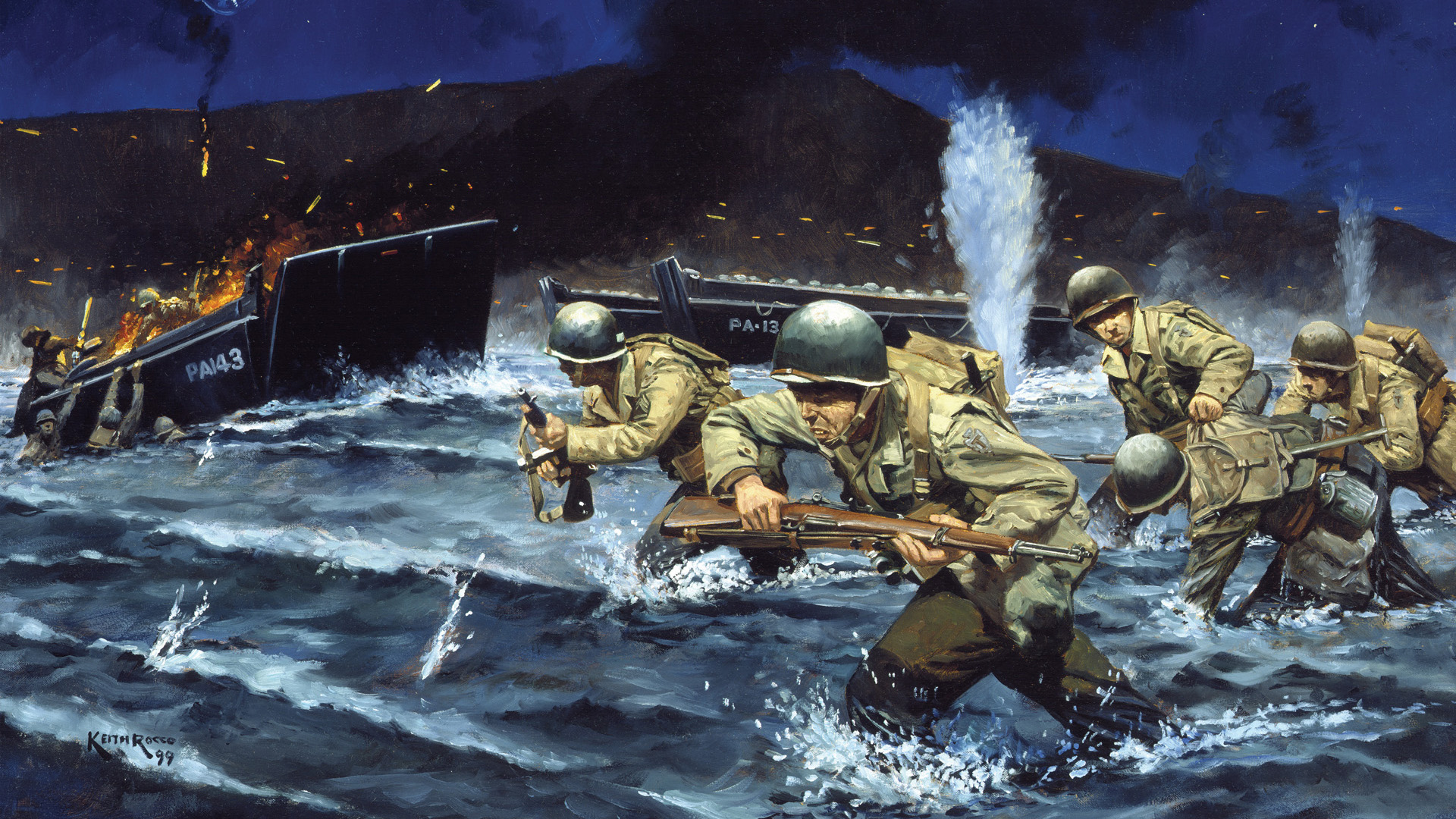
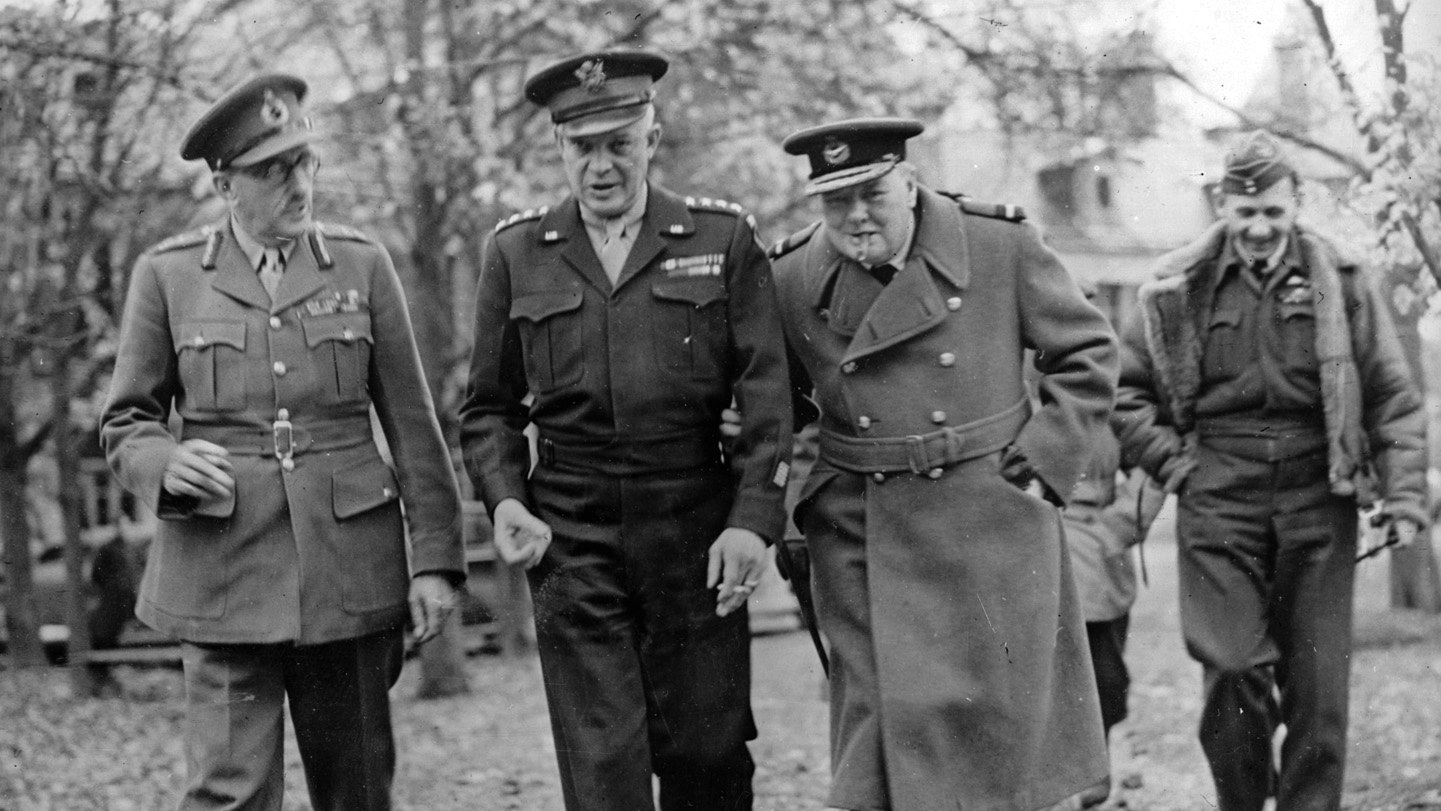
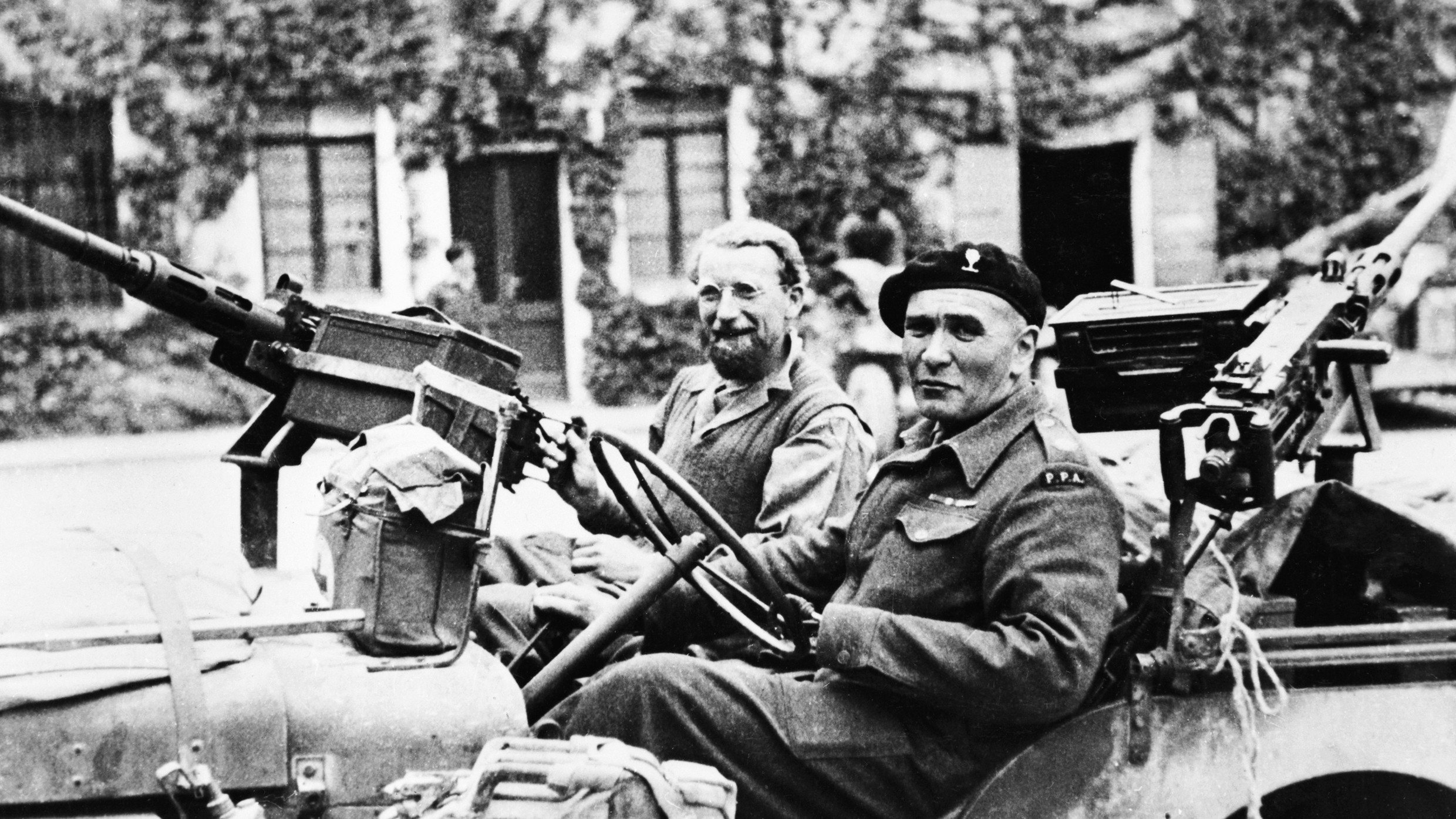
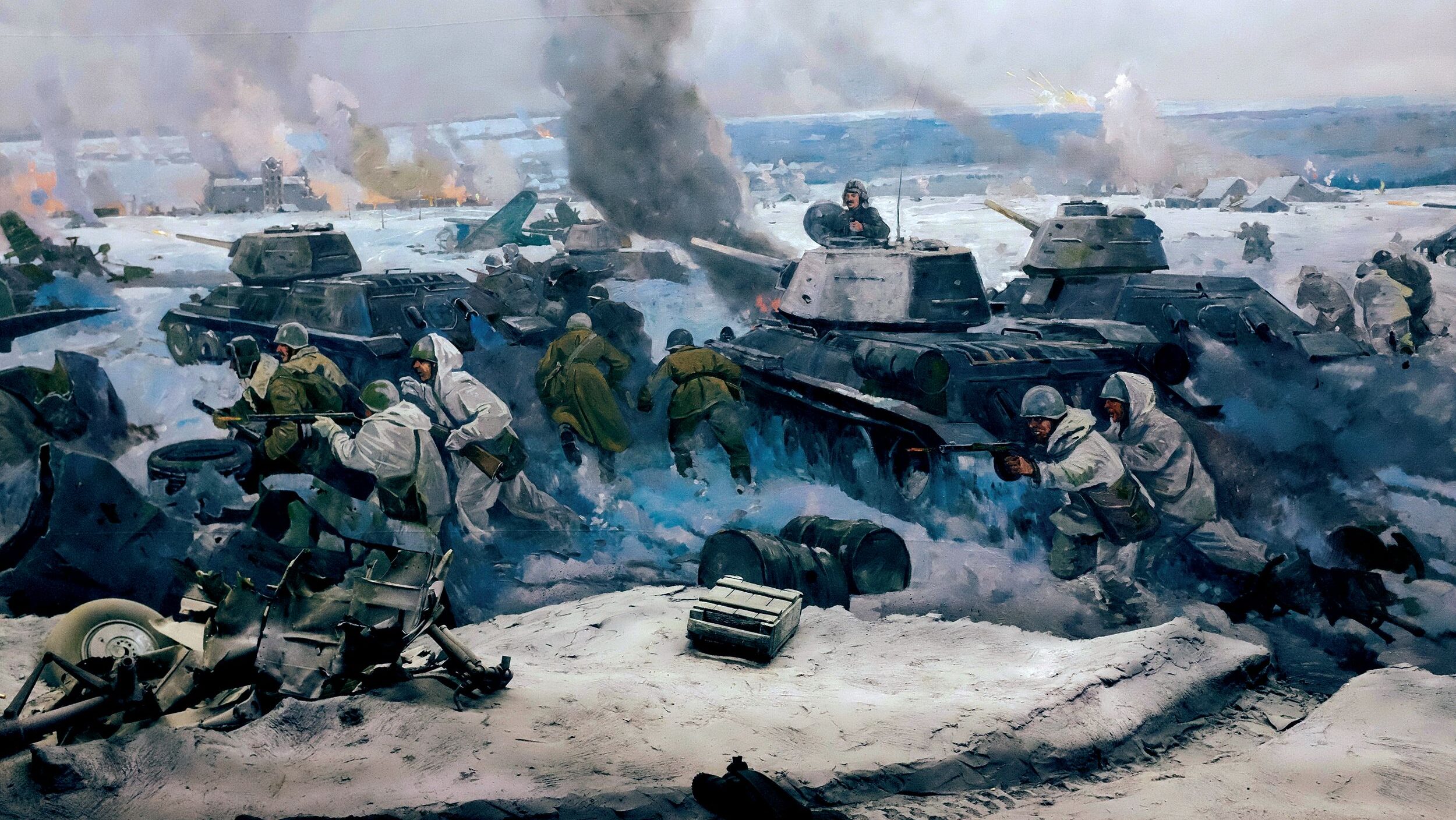
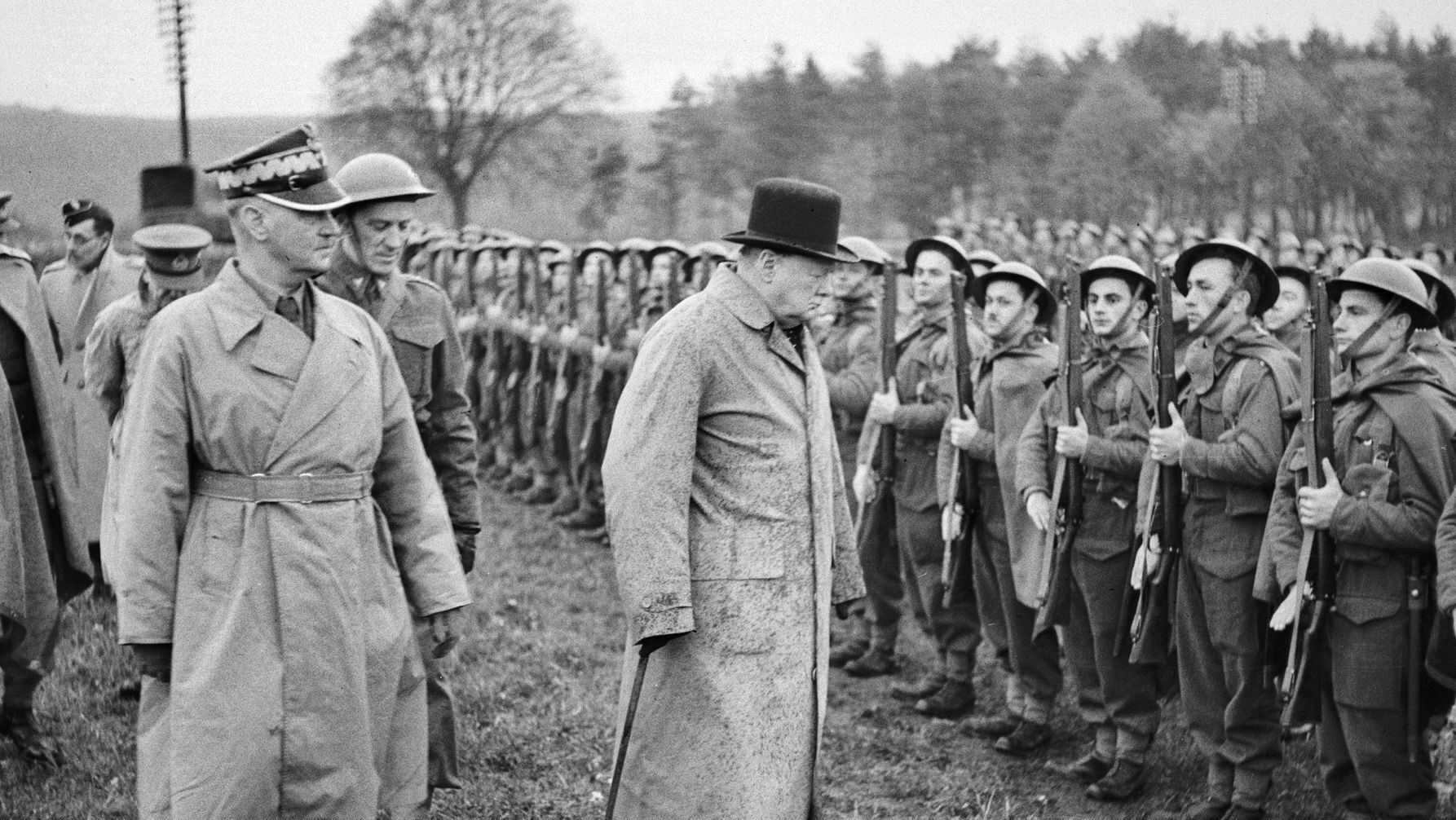
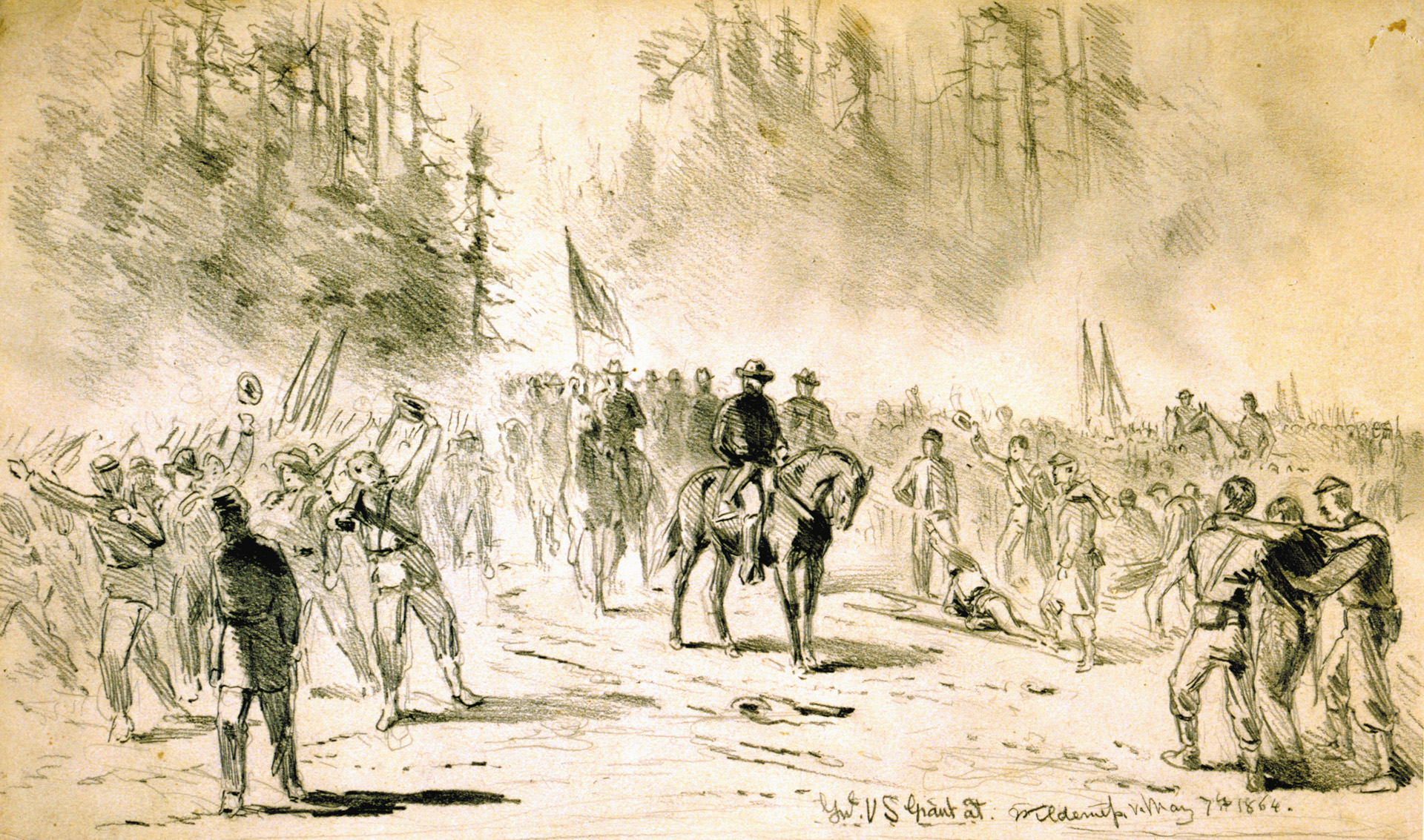
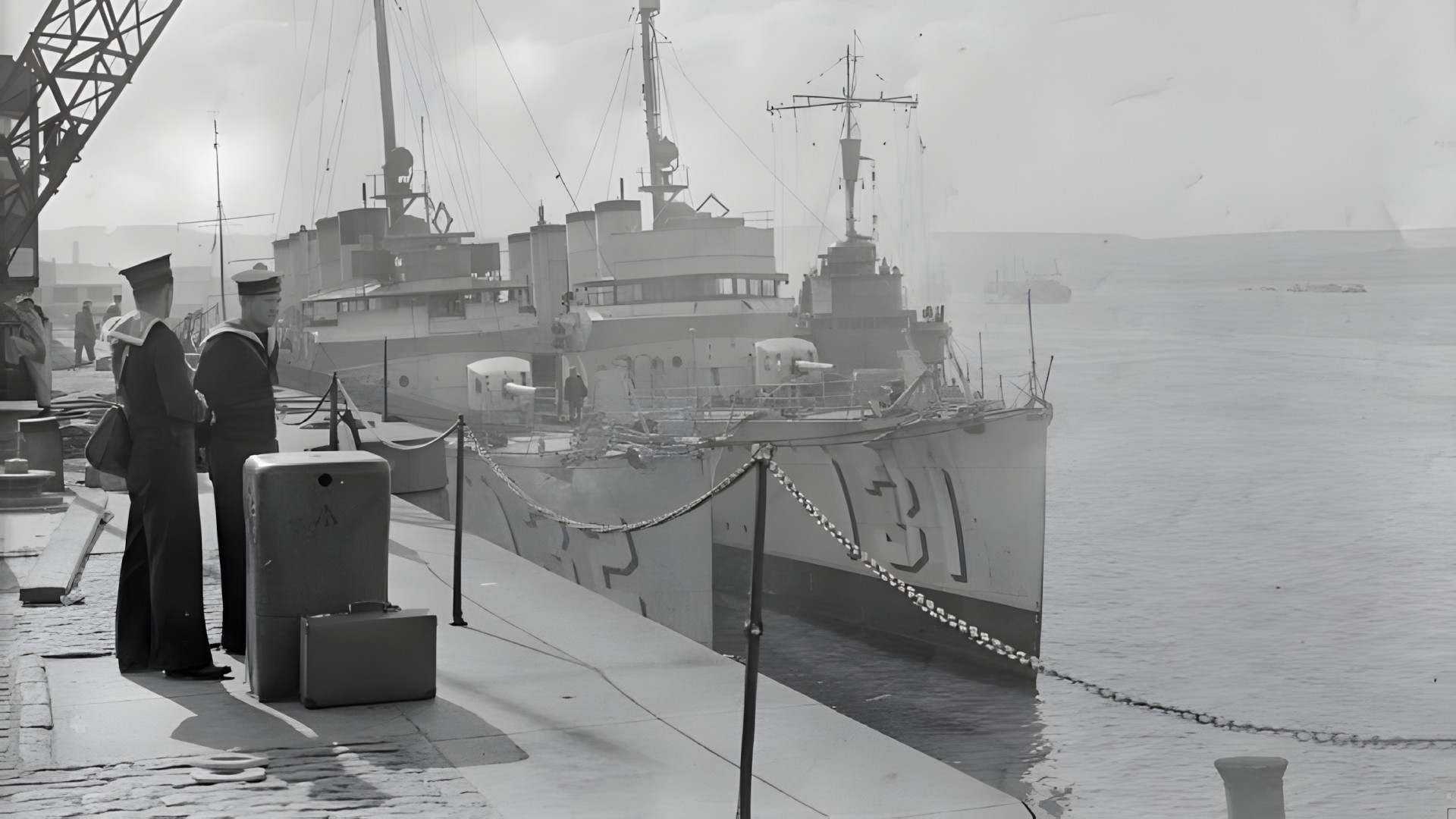
Join The Conversation
Comments
View All Comments